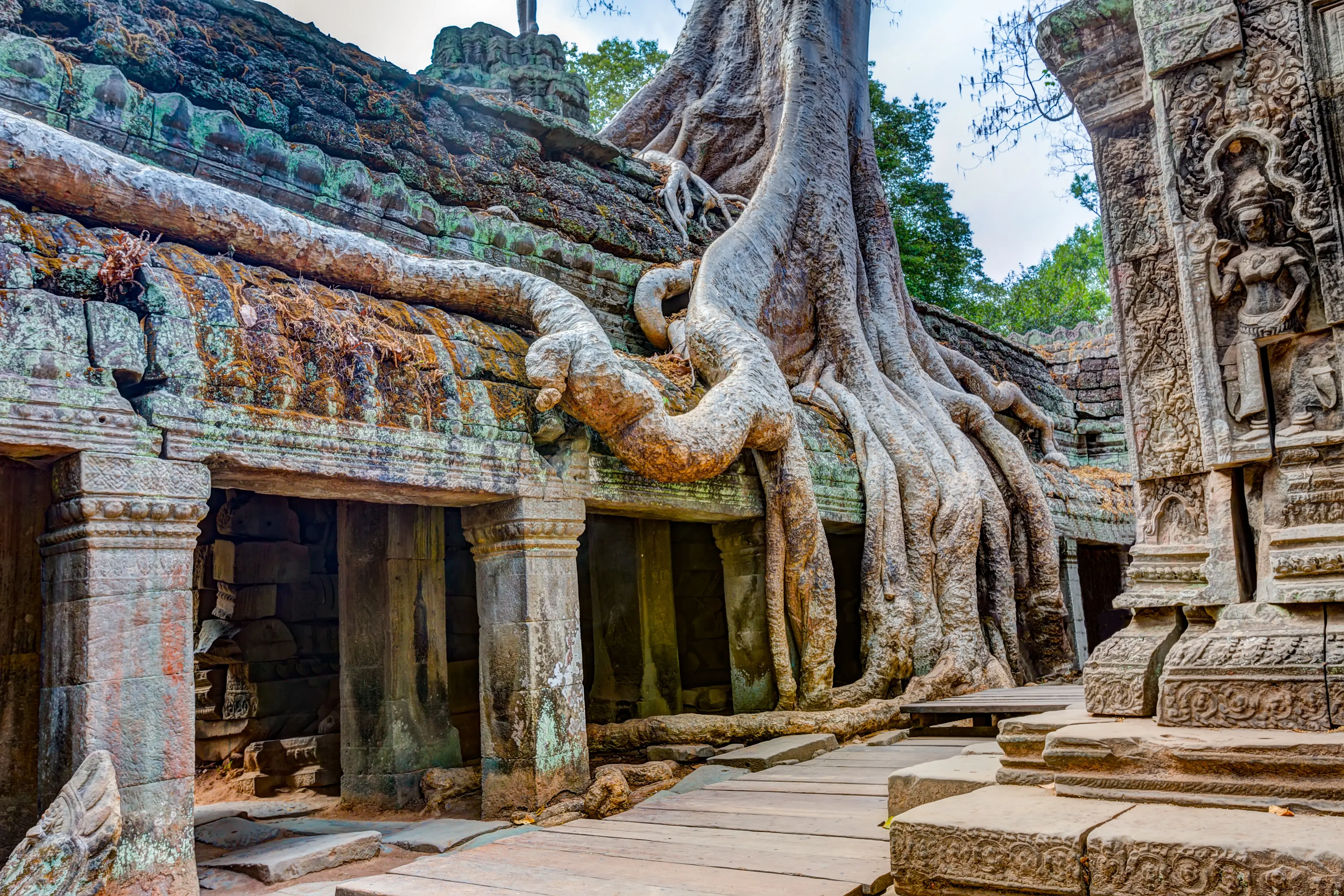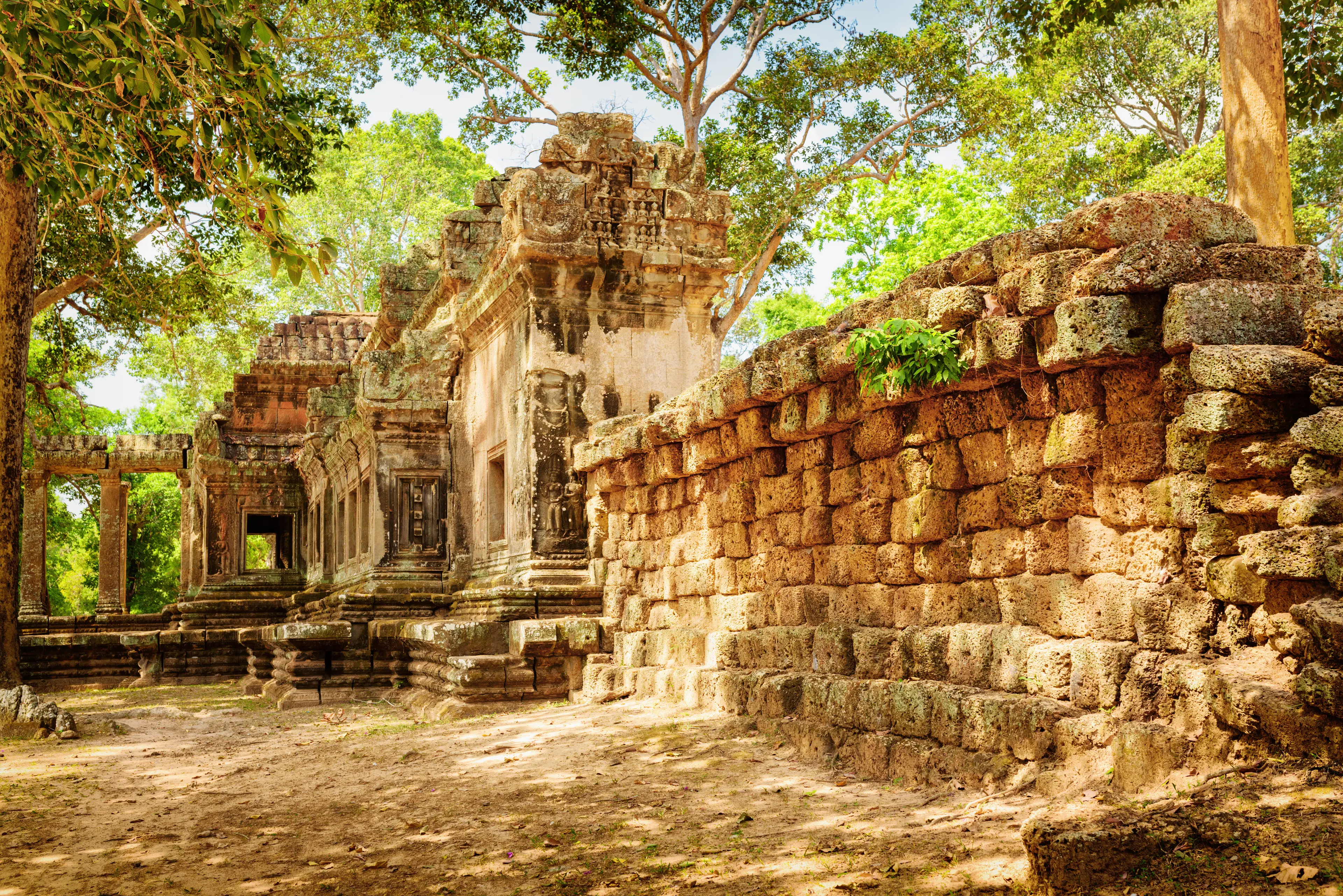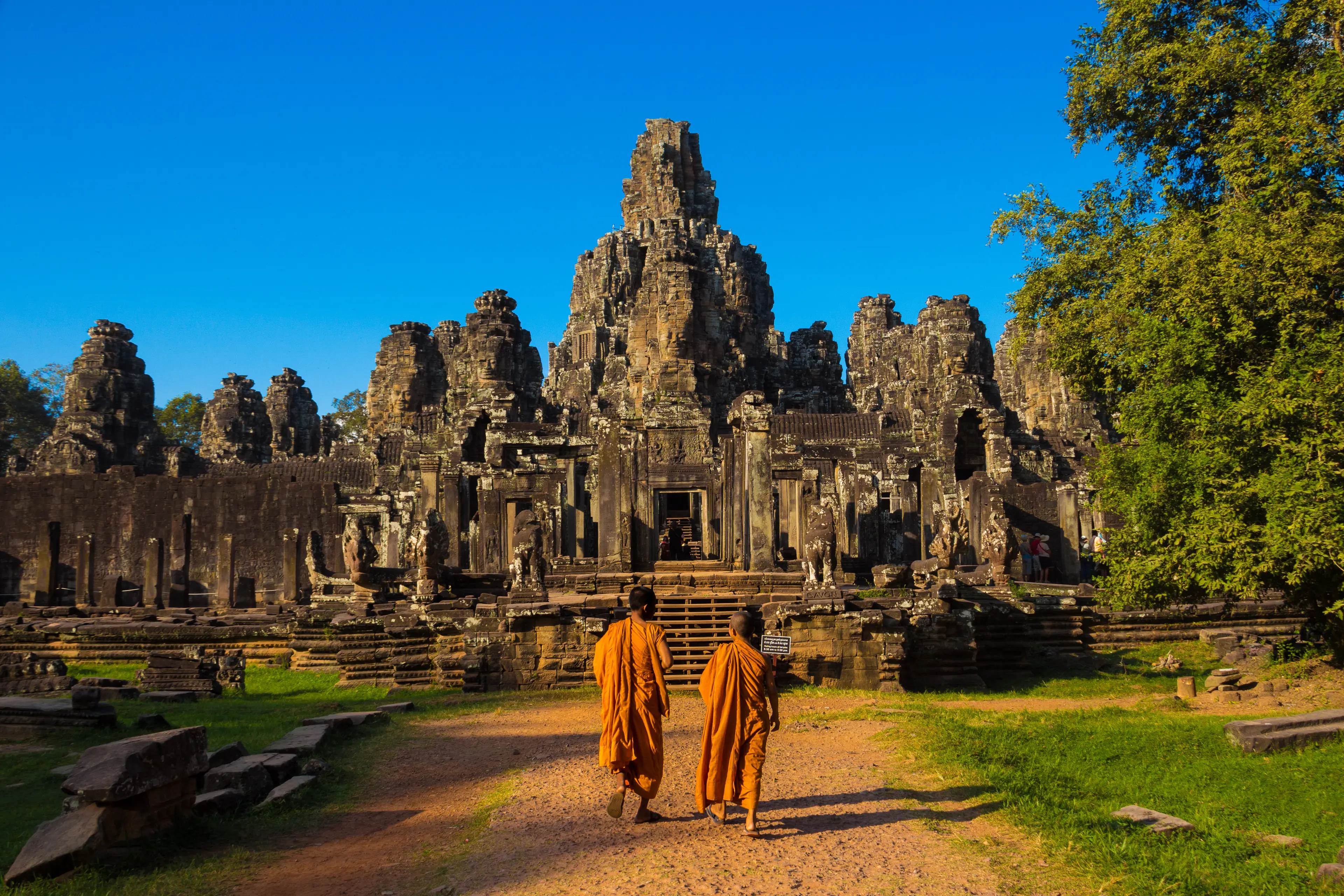2-Day Unique Adventure: Unexplored Paths of Angkor Wat, Cambodia
Angkor Wat, Cambodia
2 days
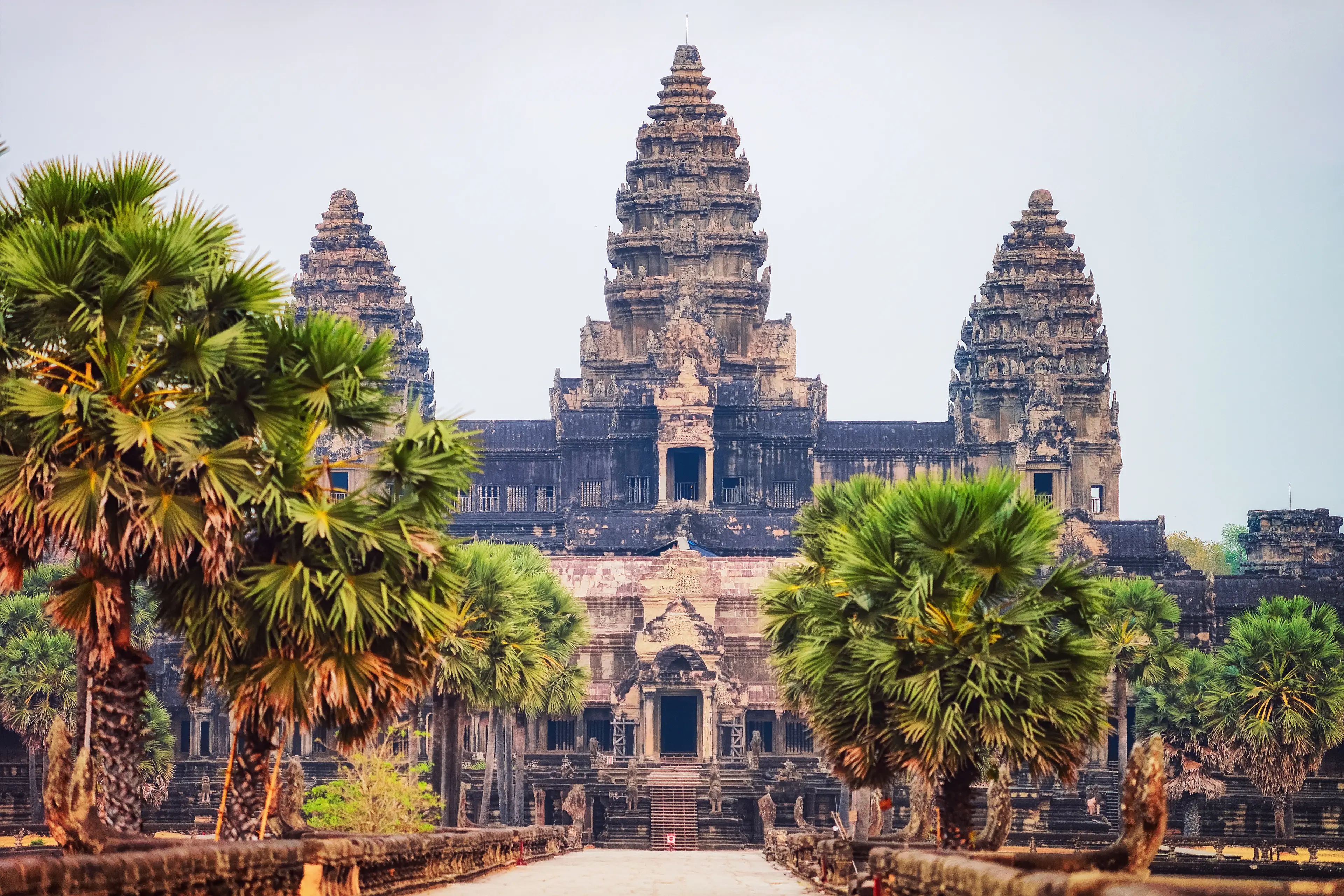
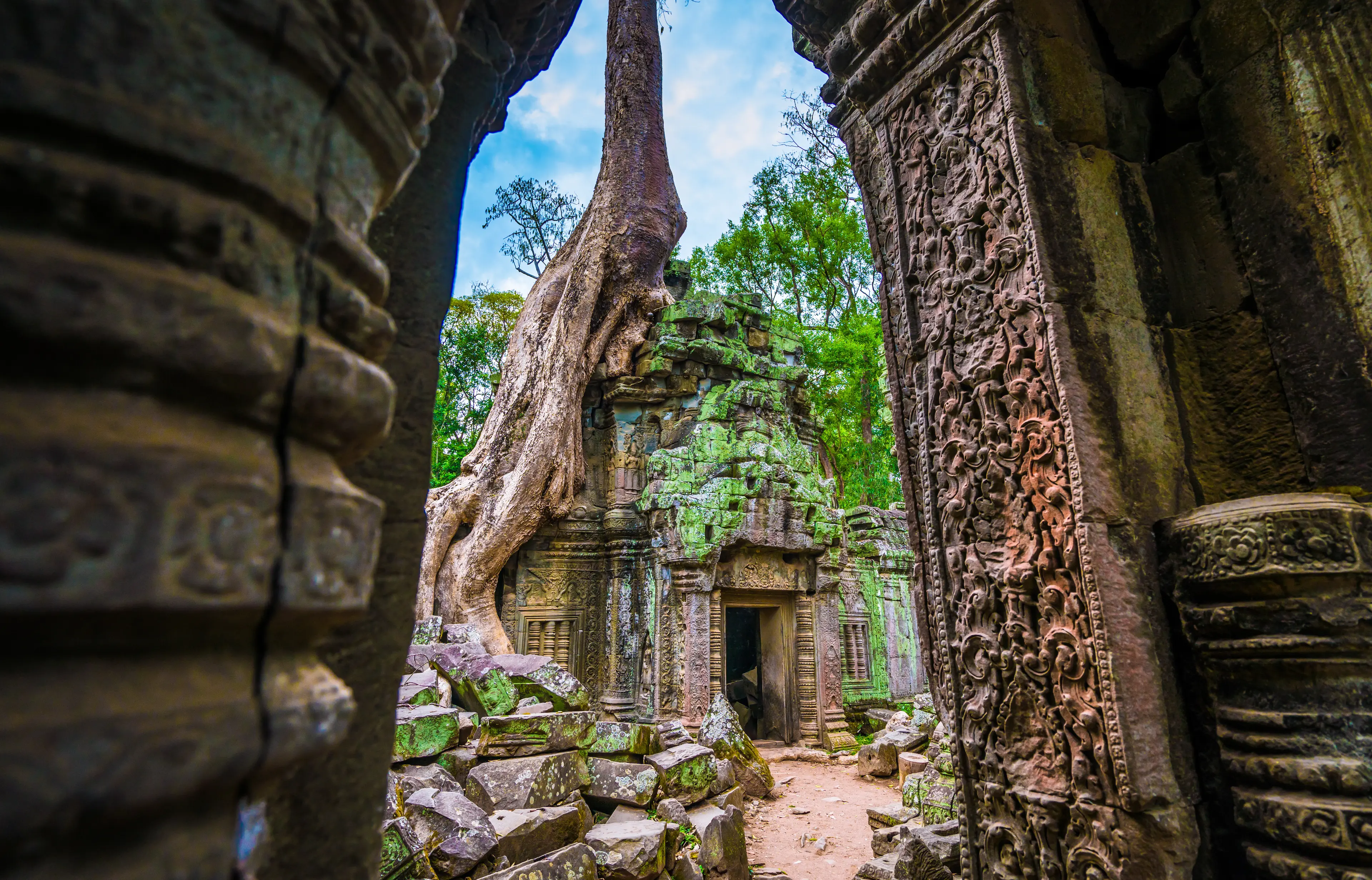
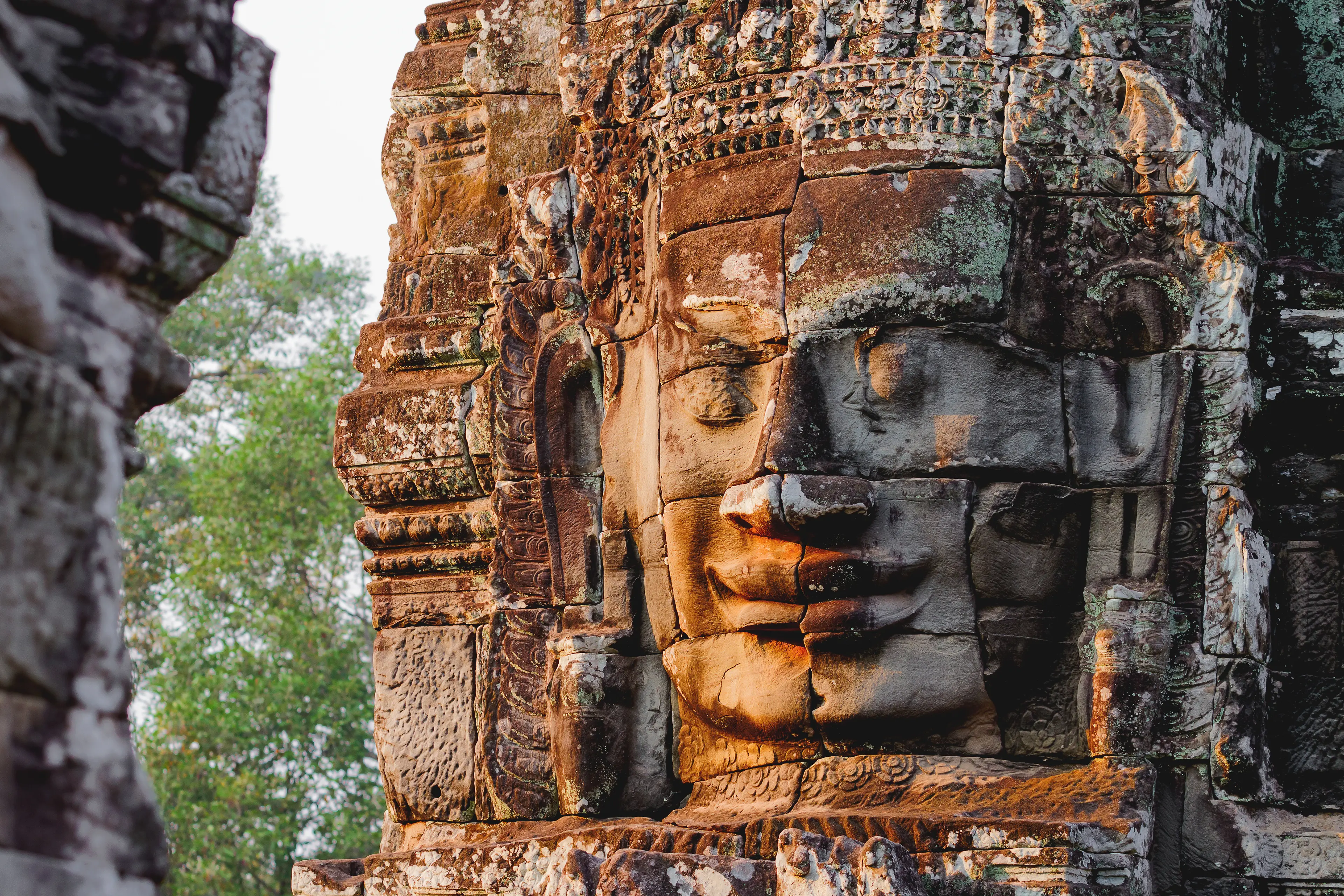
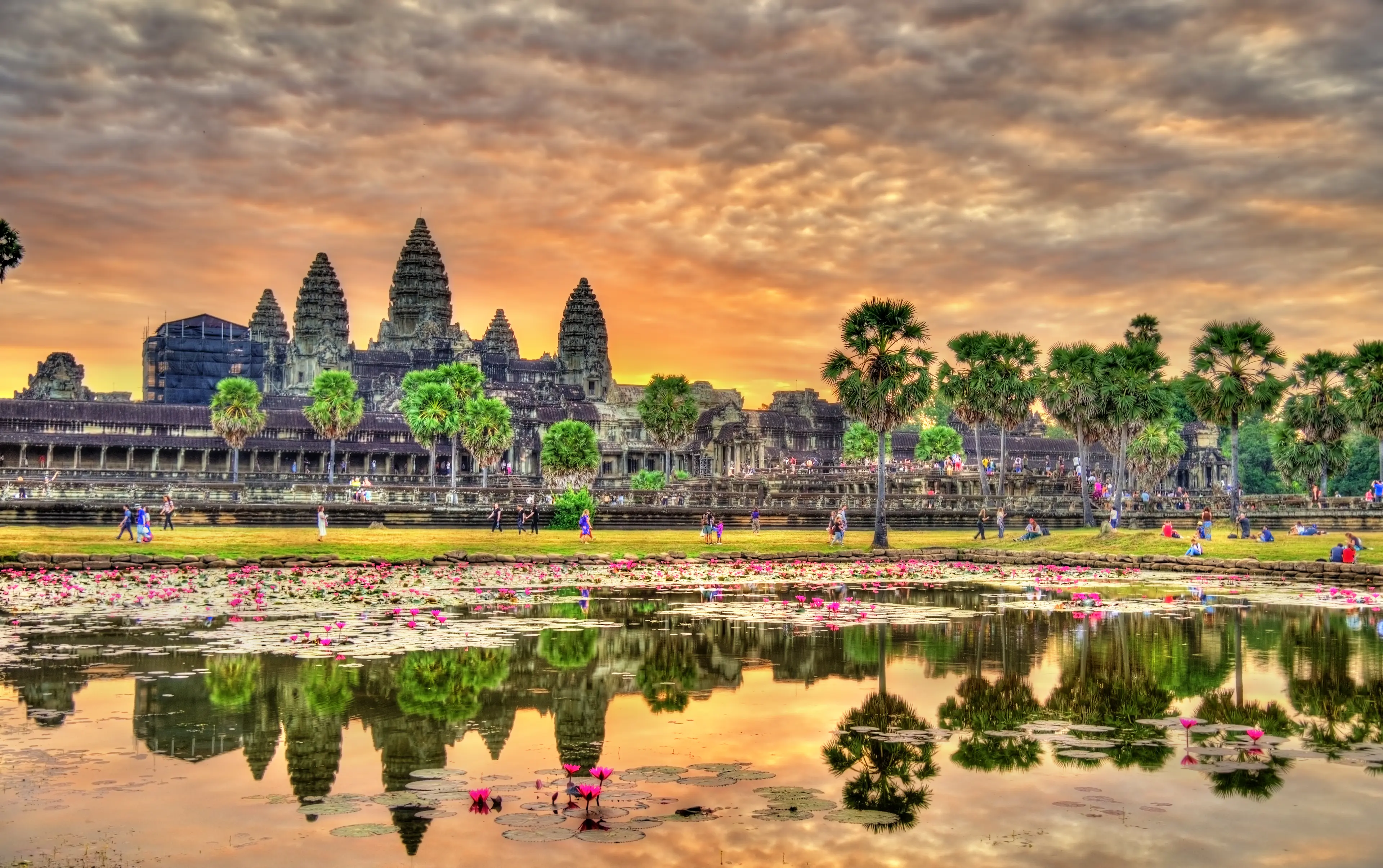
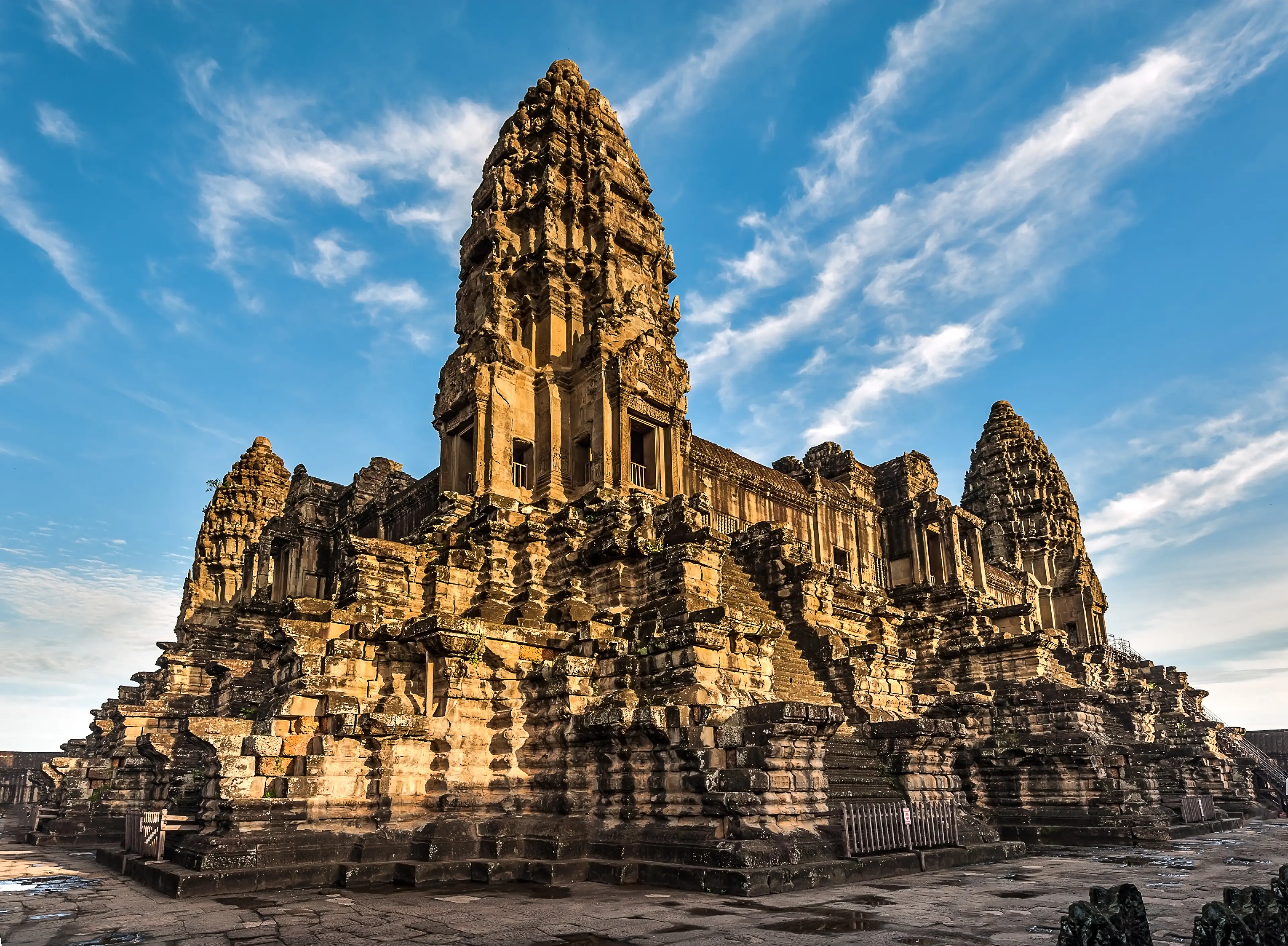
About Angkor Wat, Cambodia
Experience the mystical allure of Angkor Wat, Cambodia, a UNESCO World Heritage site. This ancient temple complex, the largest religious monument in the world, showcases the architectural genius of the Khmer Empire. Marvel at the intricate bas-reliefs and the iconic lotus-bud towers that symbolize the cosmic world in Hindu mythology. Explore the surrounding Angkor Archaeological Park, home to the enchanting Bayon Temple and the overgrown Ta Prohm, a testament to nature's power. Immerse yourself in the local culture, savor traditional Khmer cuisine, and witness a mesmerizing Apsara dance performance. Angkor Wat promises a journey back in time, a captivating blend of history, spirituality, and natural beauty.
2-Day Itinerary
Day 2
Jungle Temple and Banteay Srei Exploration
Morning
Begin your second day with a visit to Ta Prohm, a temple engulfed by the jungle. This temple is famous for the large trees growing out of its ruins, creating a mystical atmosphere.
Lunch
Have lunch in a local eatery. Try Kuy Teav, a noodle soup considered a breakfast staple in Cambodia.
Afternoon
Spend your afternoon exploring Banteay Srei, a 10th-century Cambodian temple dedicated to the Hindu god Shiva. Known as the 'Citadel of the Women', this temple is famous for its intricate pink sandstone carvings.
Dinner
Enjoy your last dinner in Cambodia with a bowl of Samlor Machu Trey, a sweet and sour soup with fish.
Evening
Spend your last evening shopping for souvenirs at the Local night market. Look for traditional Cambodian crafts like silk scarves, silverware, and stone carvings.
Attractions in Itinerary (8)
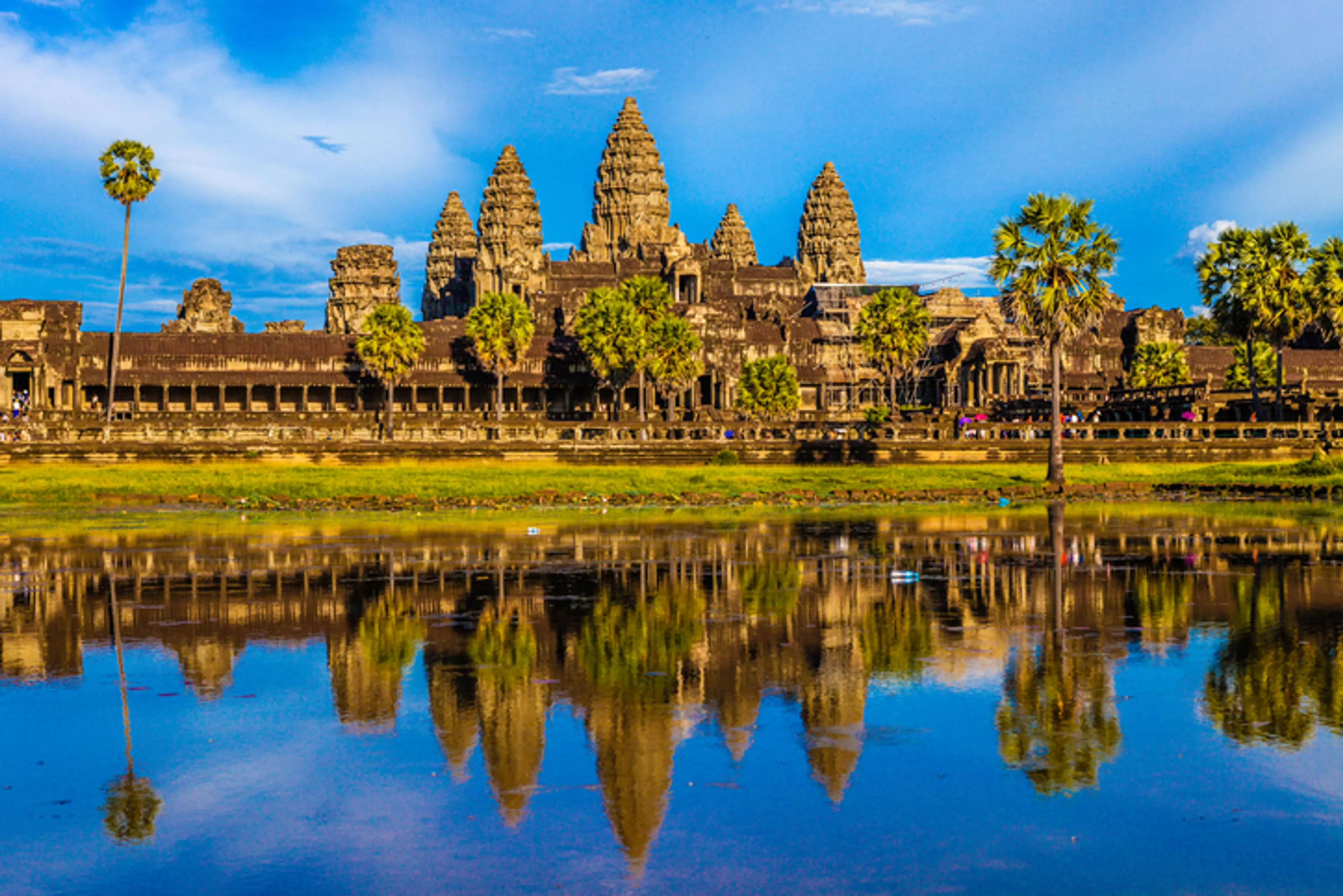
1Angkor Wat
Angkor Wat is a temple complex in Cambodia and the largest religious monument in the world. It was originally constructed as a Hindu temple for the Khmer Empire, gradually transforming into a Buddhist temple towards the end of the 12th century.

2Angkor Thom
Angkor Thom, the last capital of the Khmer Empire, is a fortified city featuring many beautiful and historically significant structures. The most notable of these is the Bayon Temple, known for its multitude of serene and massive stone faces. Other attractions include the Terrace of the Elephants, the Terrace of the Leper King, and the Baphuon temple.
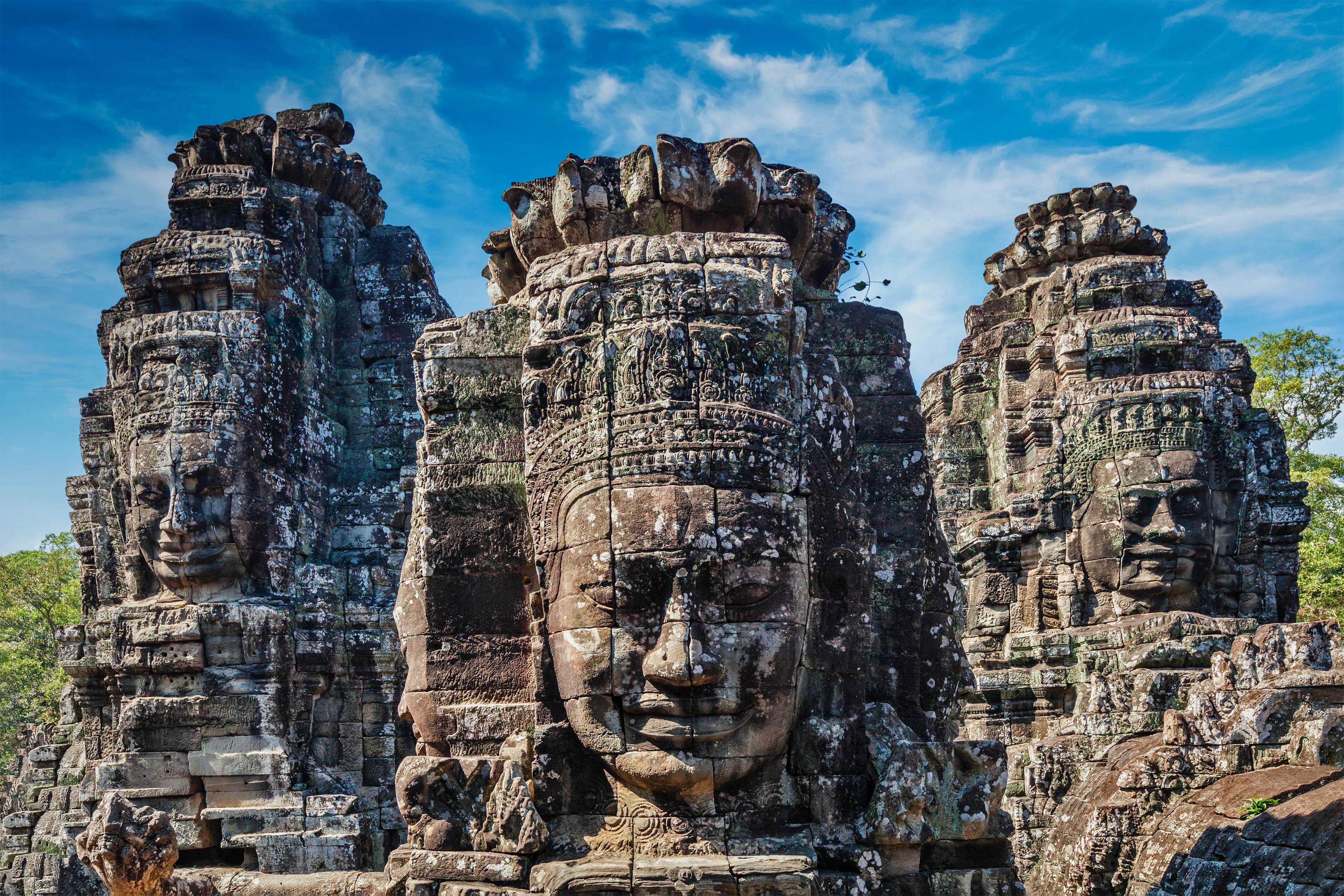
3Bayon Temple
The Bayon is a richly decorated Khmer temple at Angkor in Cambodia. Built in the late 12th or early 13th century as the state temple of the Mahayana Buddhist King Jayavarman VII, the Bayon stands at the centre of Jayavarman's capital, Angkor Thom.

4Terrace of the Elephants
The Terrace of the Elephants is part of the walled city of Angkor Thom. The terrace was used by Angkor's king Jayavarman VII as a platform from which to view his victorious returning army.
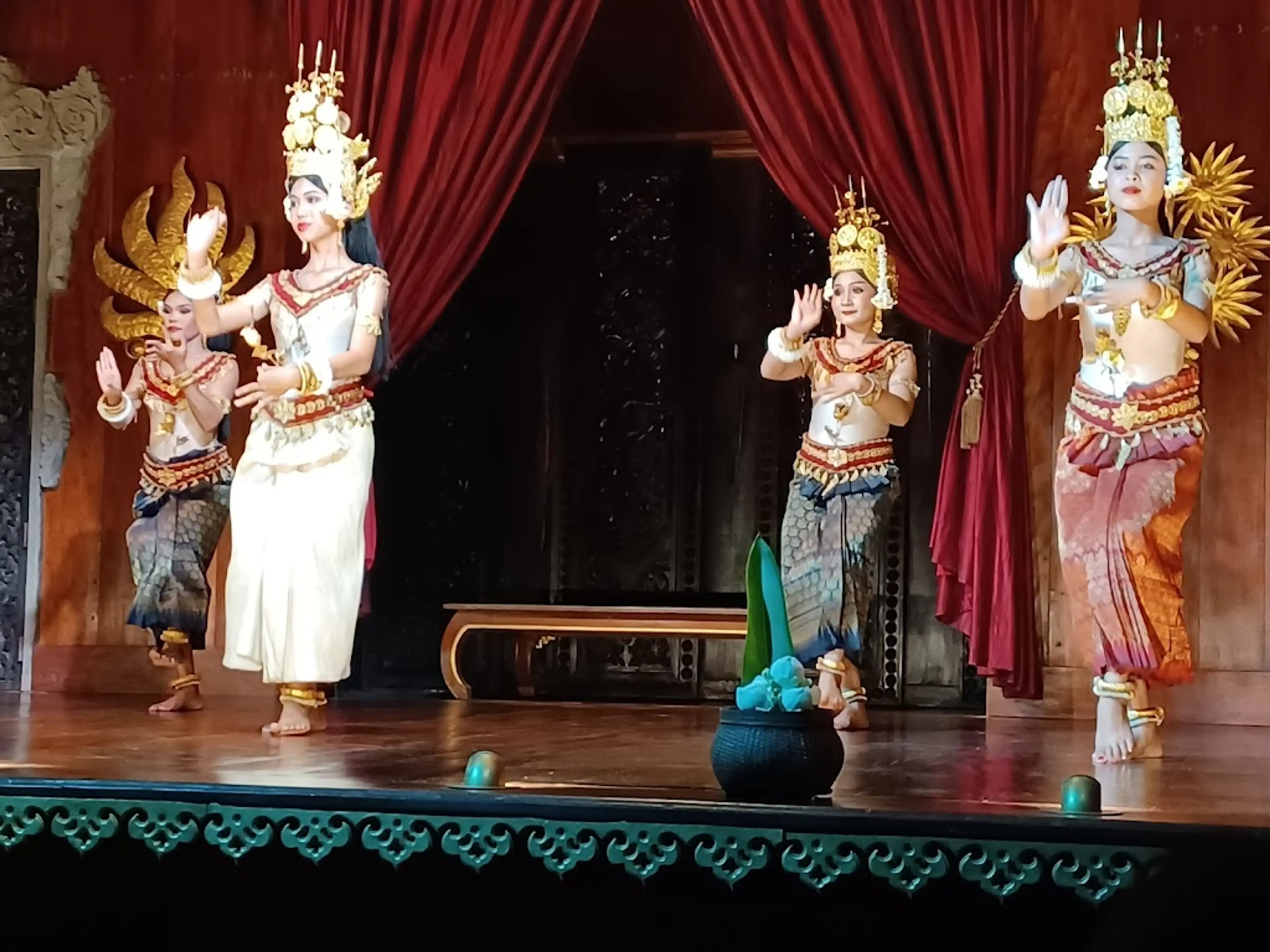
5Apsara Dance Show
Apsara Dance Show is a traditional Khmer performance that is a must-see in Cambodia. The dancers wear elaborate costumes and move with grace and precision, telling stories with their hands and feet.

6Ta Prohm
A temple at Angkor, Siem Reap Province, a photogenic and atmospheric maze of trees growing out of temple ruins amidst the jungle.
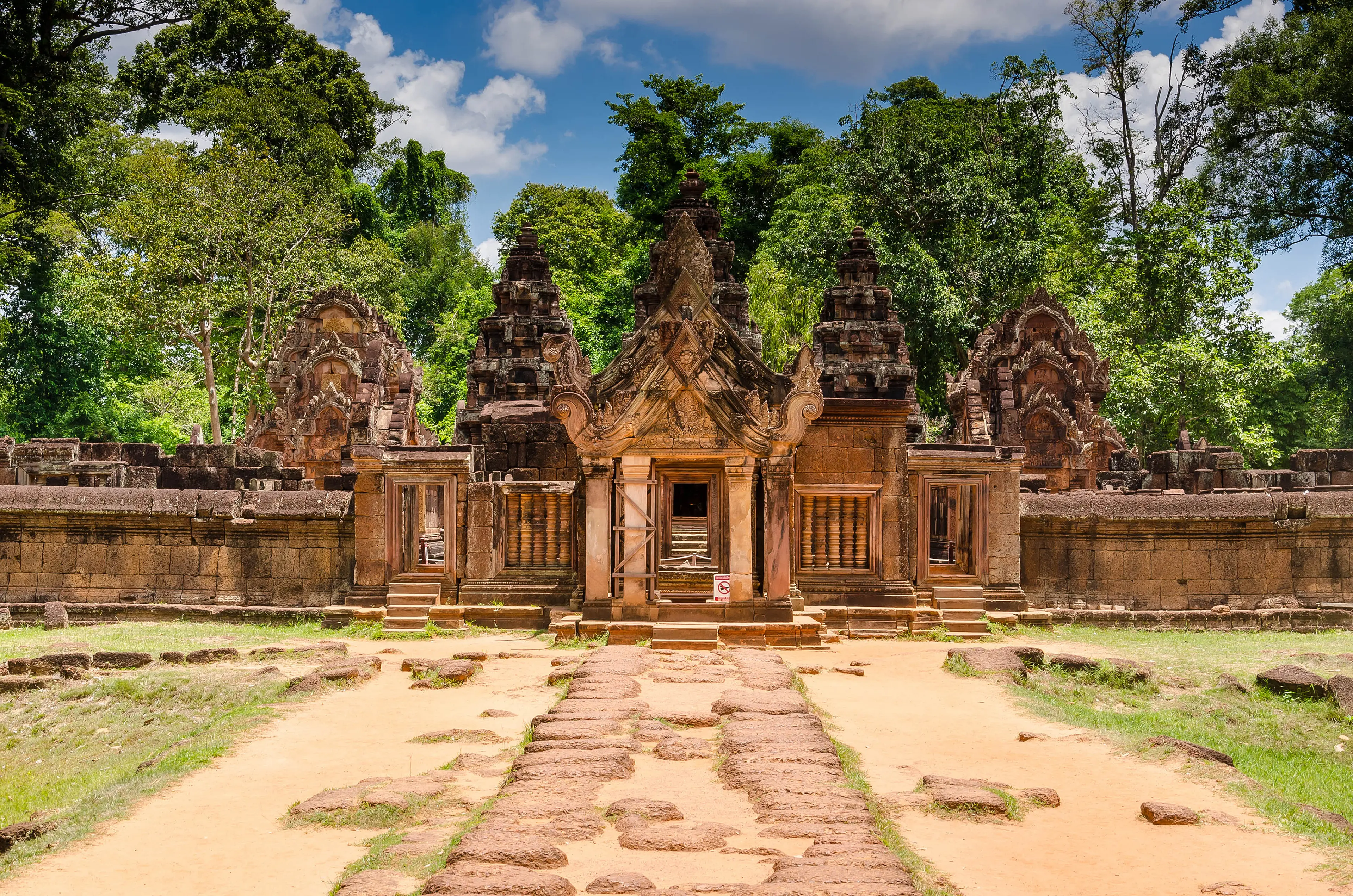
7Banteay Srei
A 10th-century Cambodian temple dedicated to the Hindu god Shiva, known for its beautiful red sandstone carvings.
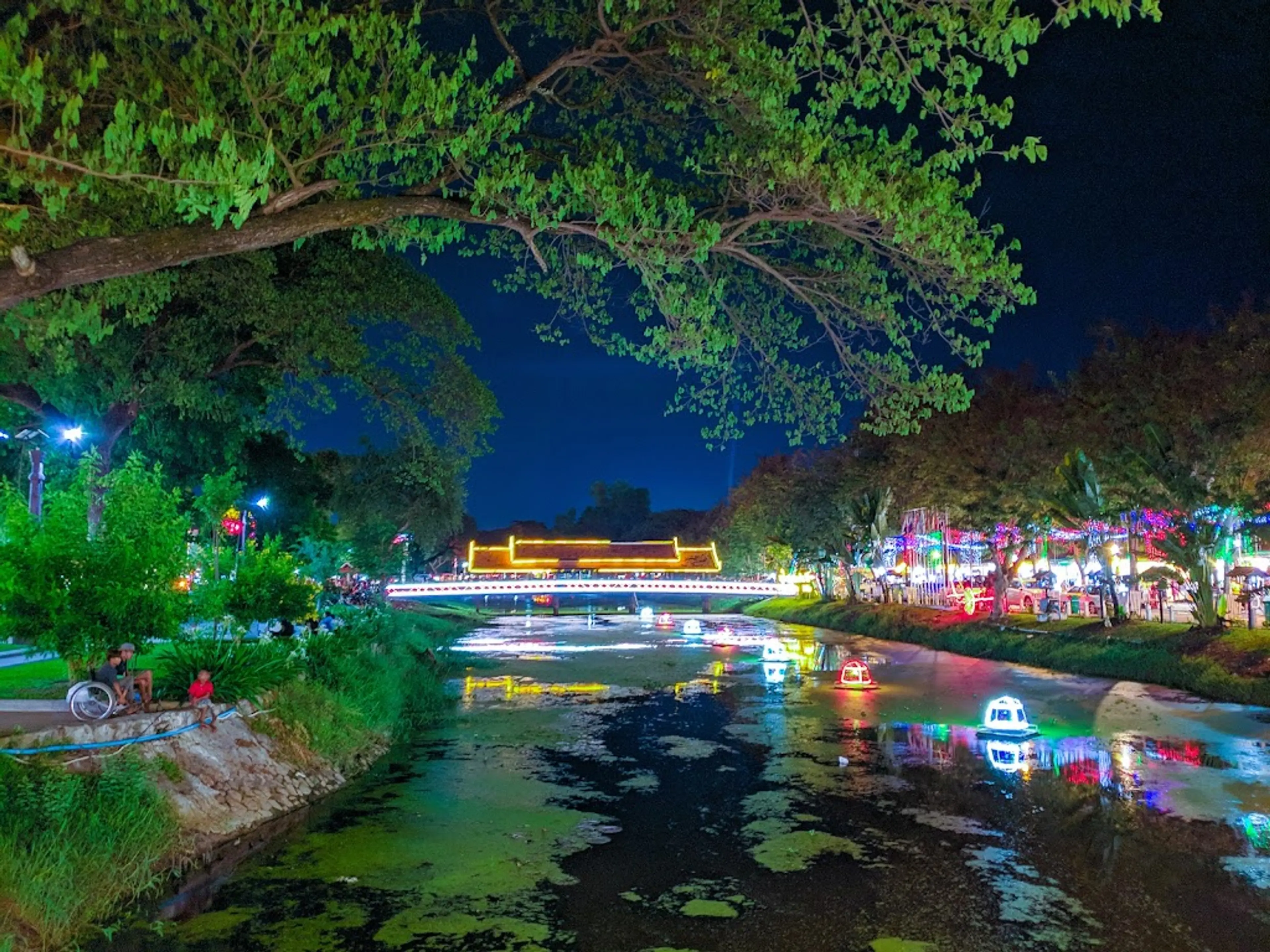
8Local night market
A bustling market that comes alive in the evening, offering a wide range of goods including local handicrafts, textiles, and street food.
Local Food and Drinks (12)
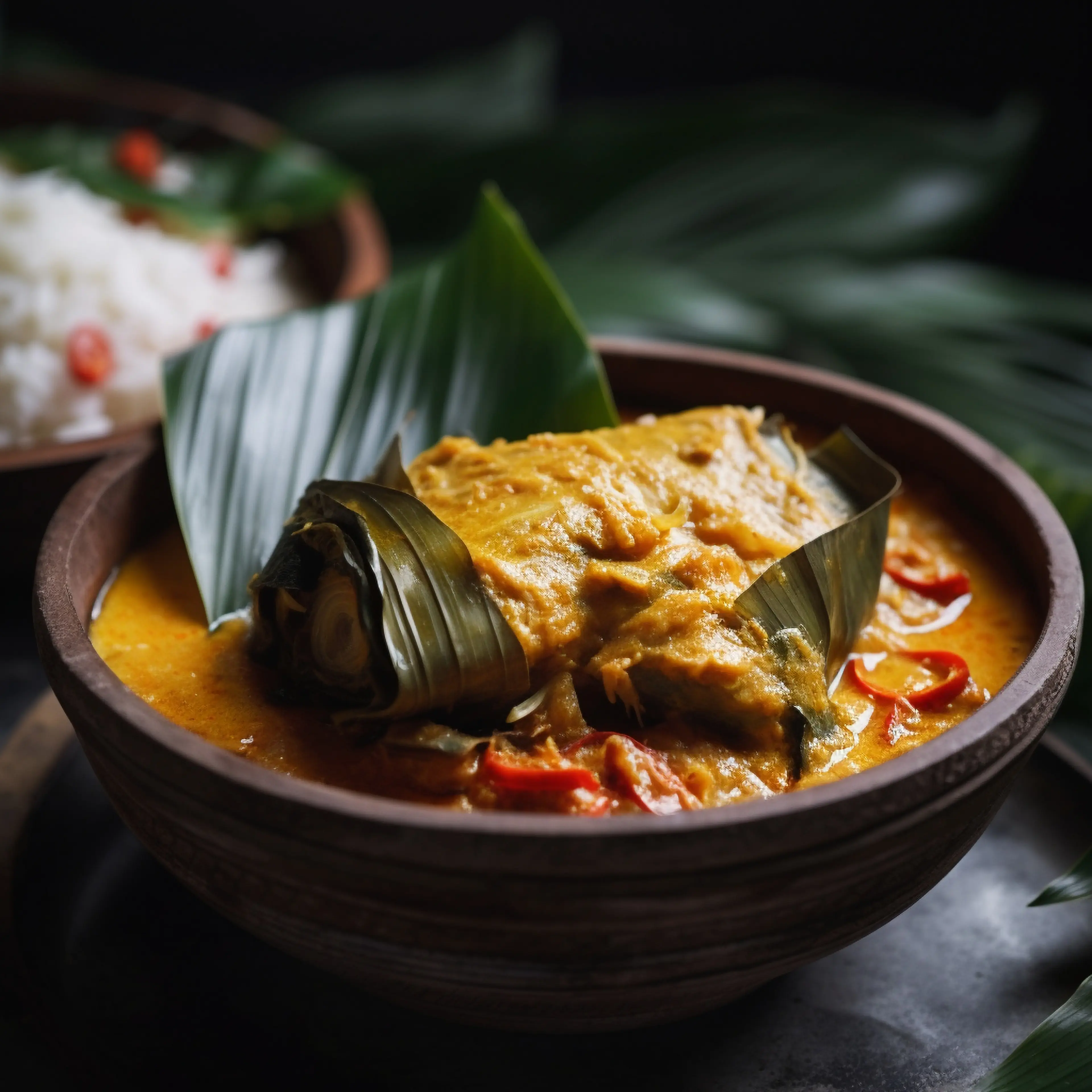
Amok Trei
A traditional Cambodian dish, Amok Trei is a steamed, curried fish, typically served in banana leaves. It's a must-try for visitors to Angkor Wat as it reflects the rich culinary tradition of the region.
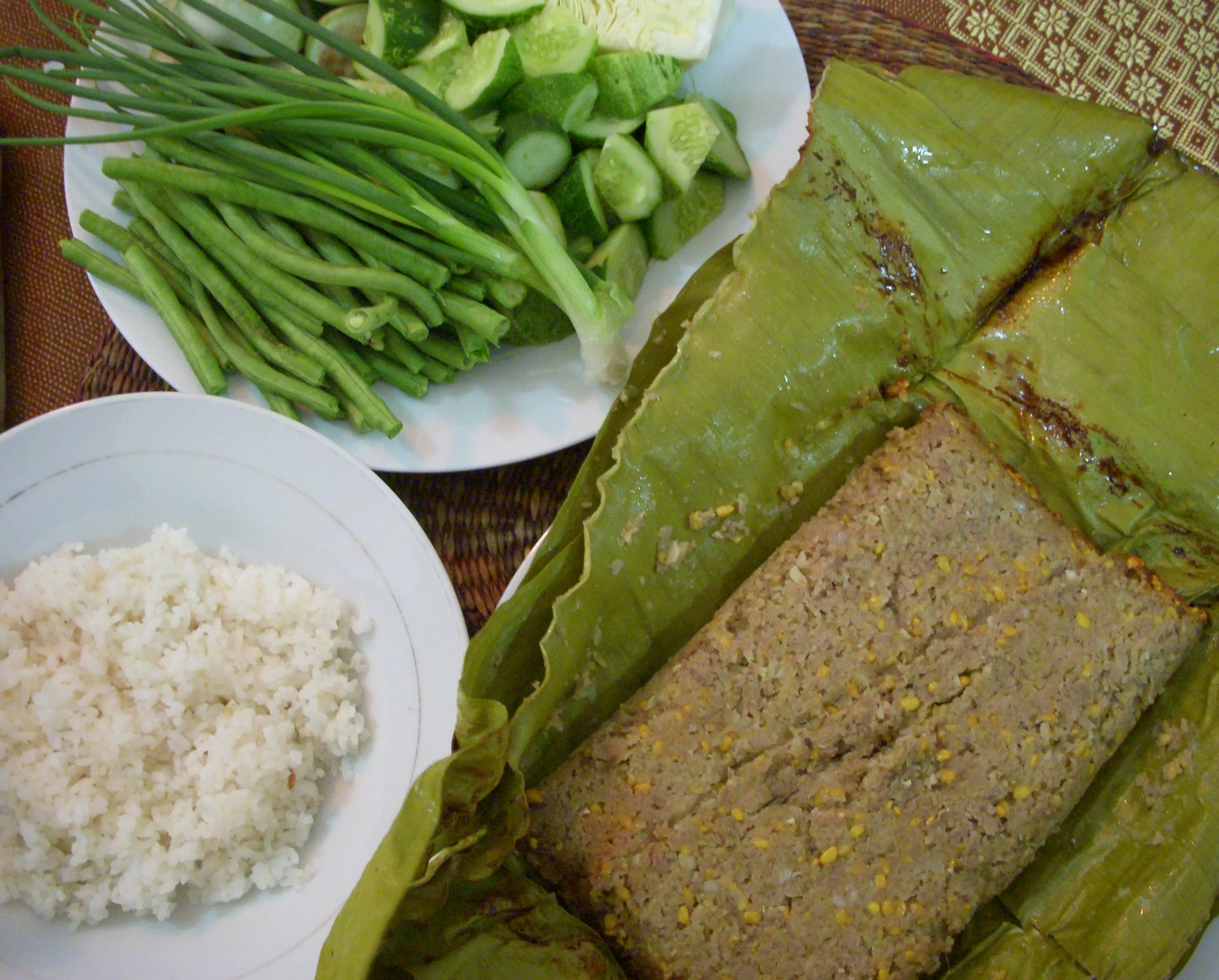
Prahok
Prahok is a fermented fish paste that is a staple in Cambodian cuisine. It's often used as a seasoning or a condiment, and it's a unique taste of the local food culture near Angkor Wat.
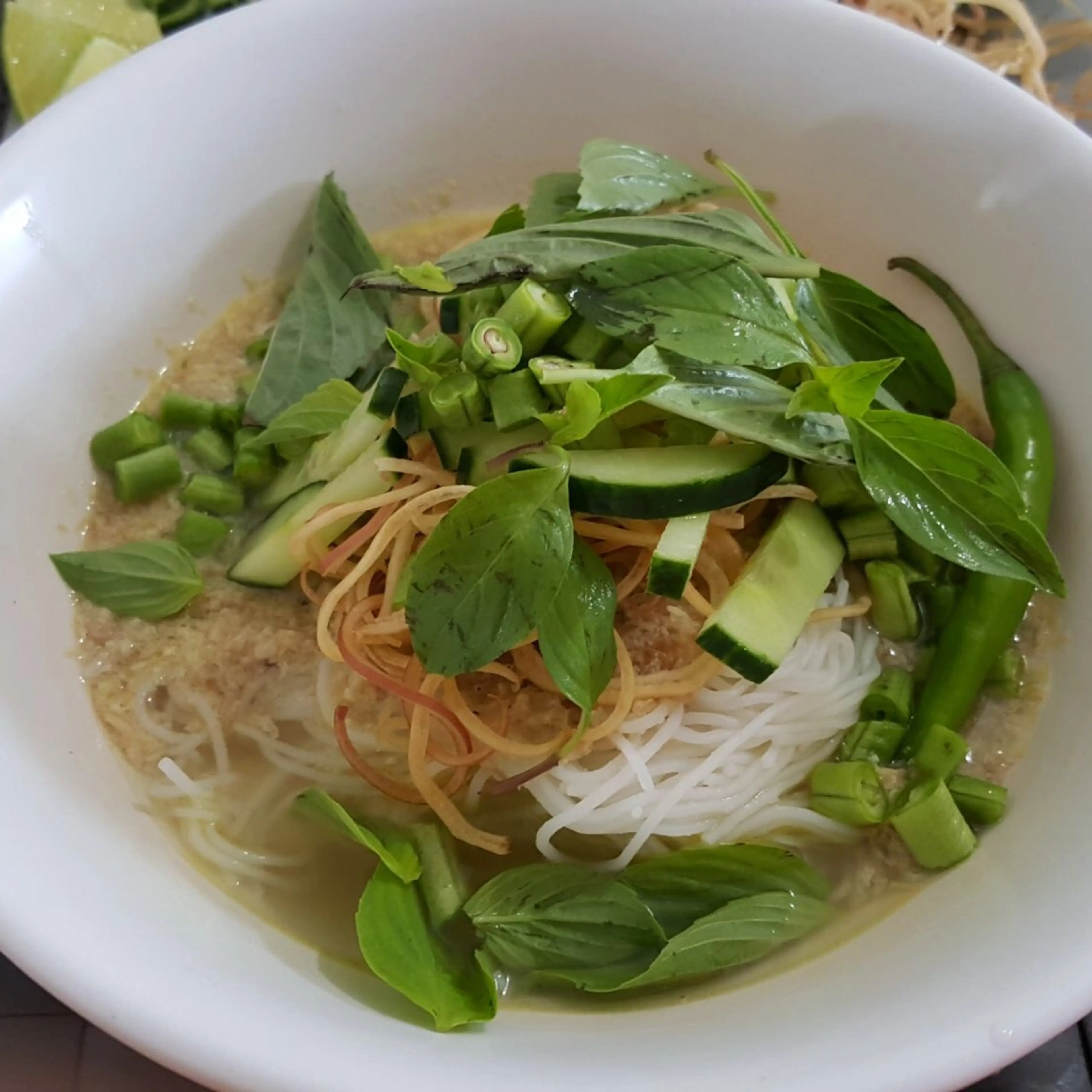
Nom Banh Chok
Often referred to as 'Khmer noodles', Nom Banh Chok is a popular breakfast dish in Cambodia. It's a noodle dish served with a fish-based green curry gravy, and it's a common sight in the local markets around Angkor Wat.
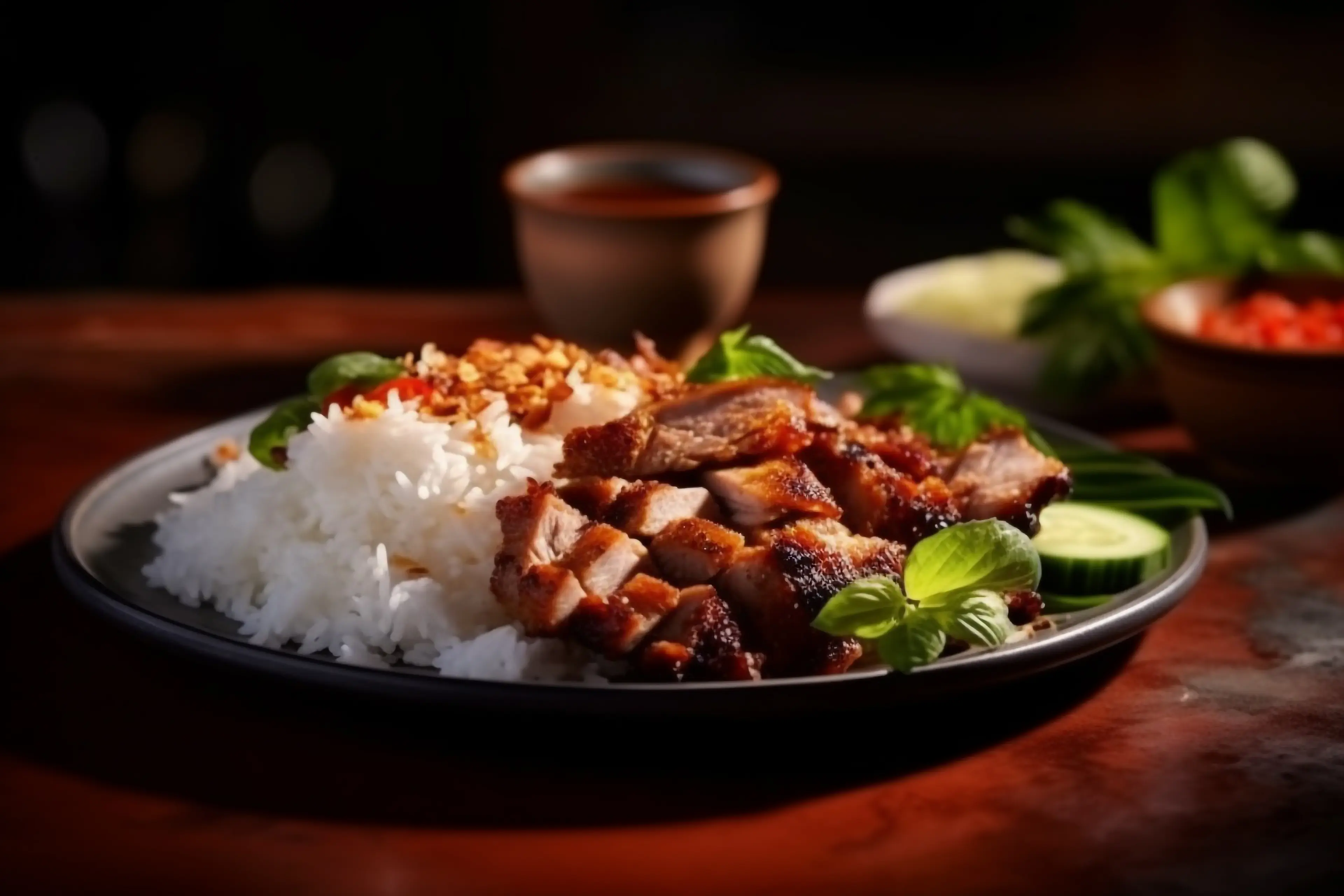
Bai Sach Chrouk
Another popular breakfast dish, Bai Sach Chrouk is grilled pork served with rice. It's a simple, yet flavorful dish that is a staple in the local cuisine of the Angkor Wat region.
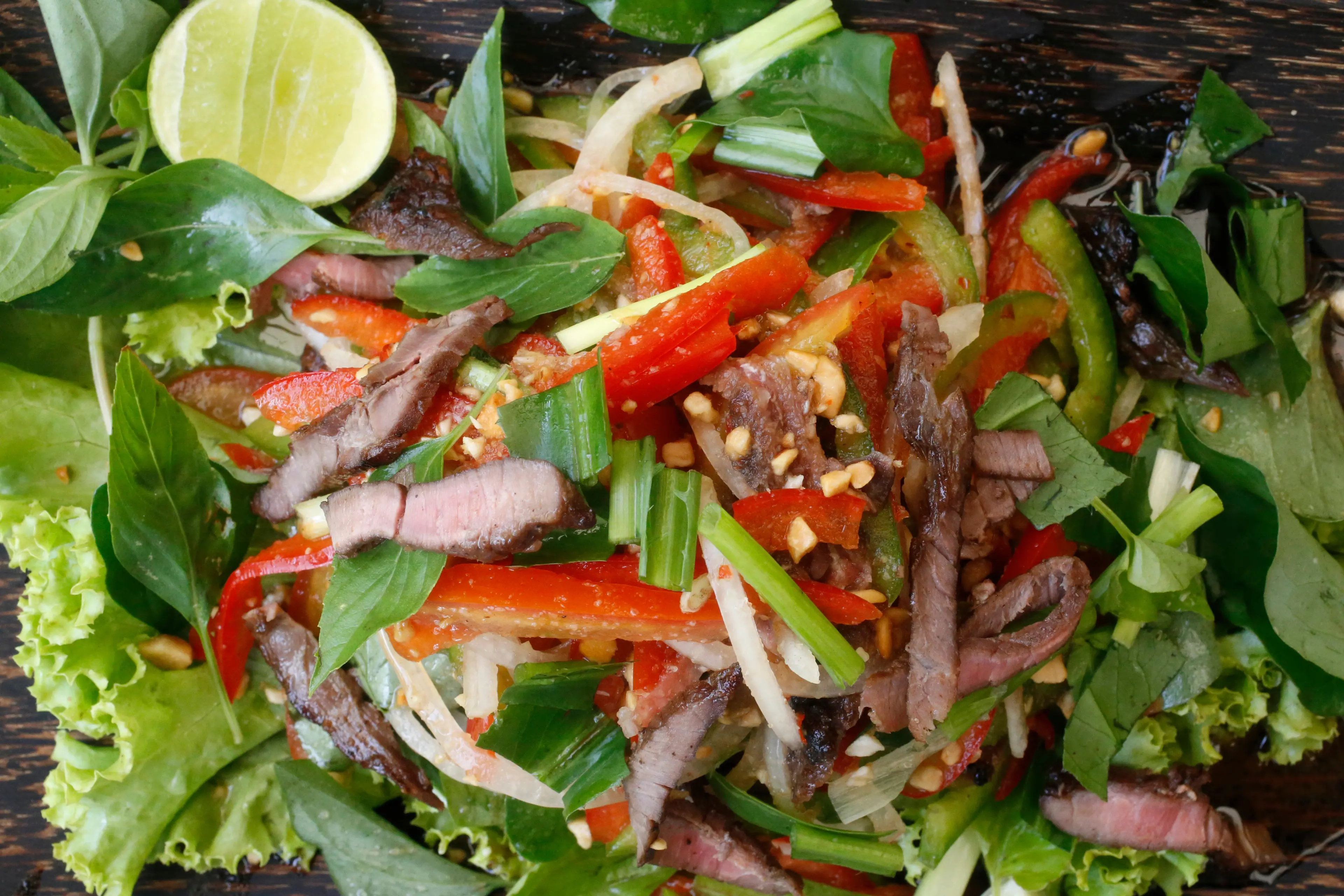
Lap Khmer
Lap Khmer is a lime-marinated Khmer beef salad. It's a refreshing dish that showcases the fresh, vibrant flavors of Cambodian cuisine, making it a must-try for visitors to Angkor Wat.
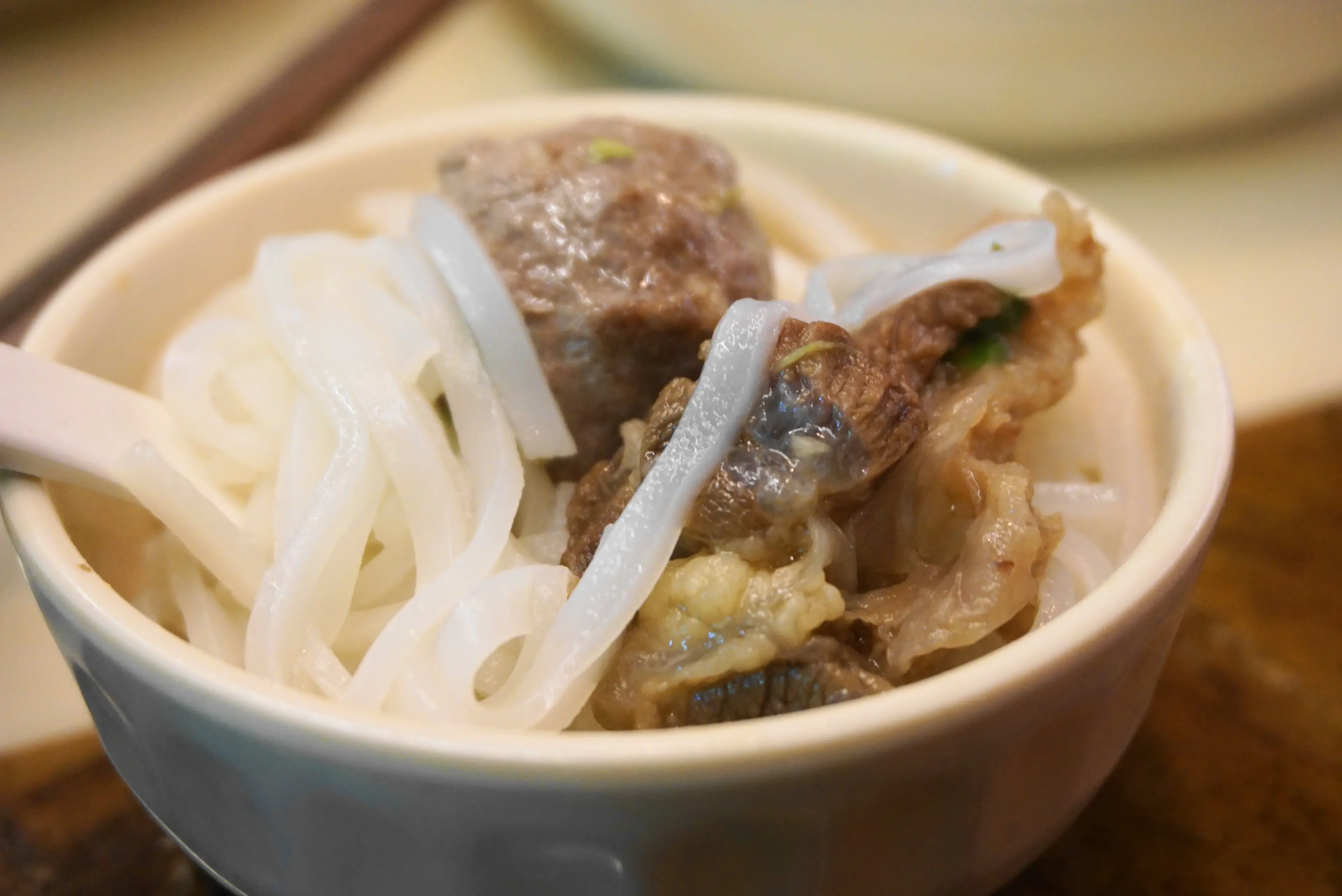
Kuy Teav
Kuy Teav is a noodle soup made from pork or beef bones and rice vermicelli. It's a popular street food in Cambodia, and a comforting, hearty dish to try after a day of exploring Angkor Wat.

Cha Houy Teuk
Cha Houy Teuk is a Cambodian jelly dessert, often brightly colored and served with coconut milk. It's a fun, sweet treat to try while visiting Angkor Wat.

Num Pang
Num Pang is the Cambodian version of a sandwich. It's typically filled with meat, vegetables, and a chili sauce, making it a delicious, quick meal to grab while touring Angkor Wat.
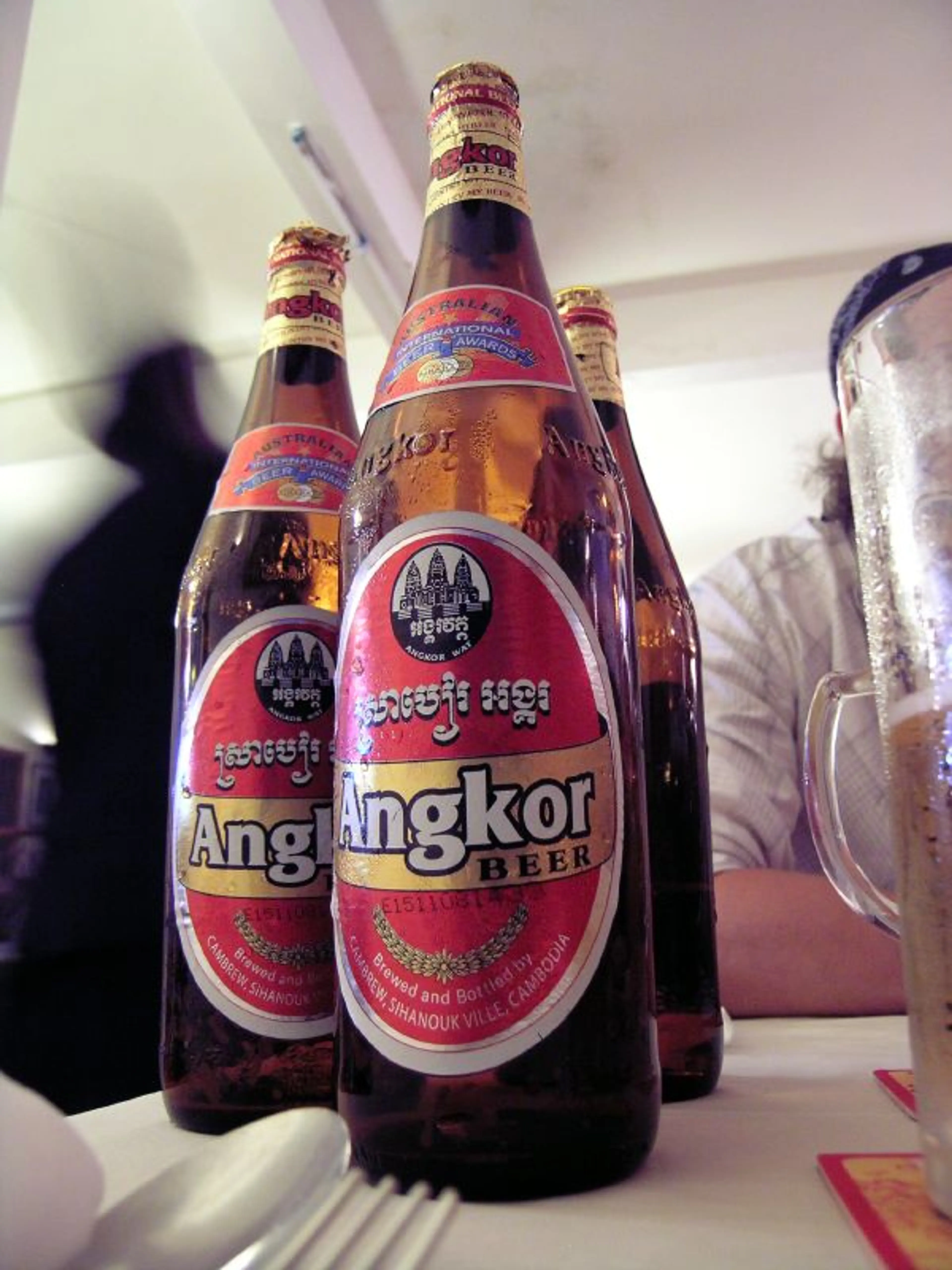
Angkor Beer
Angkor Beer is a popular local beer in Cambodia. It's a refreshing lager that is perfect for cooling down after a day of exploring Angkor Wat.
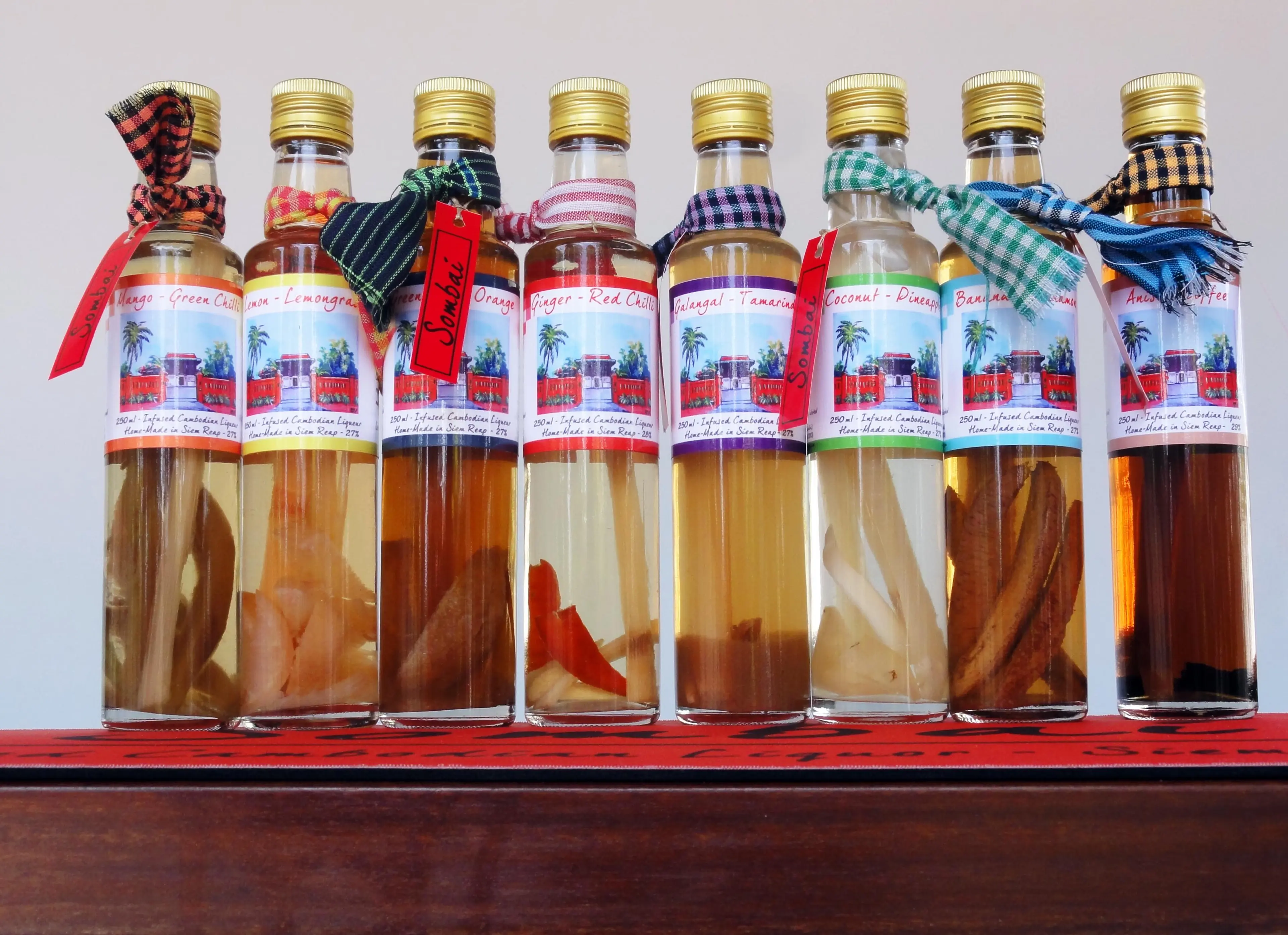
Sraa Tram
Sraa Tram, or sticky rice wine, is a traditional Cambodian alcoholic beverage. It's a unique drink to try while visiting Angkor Wat, offering a taste of the local culture.
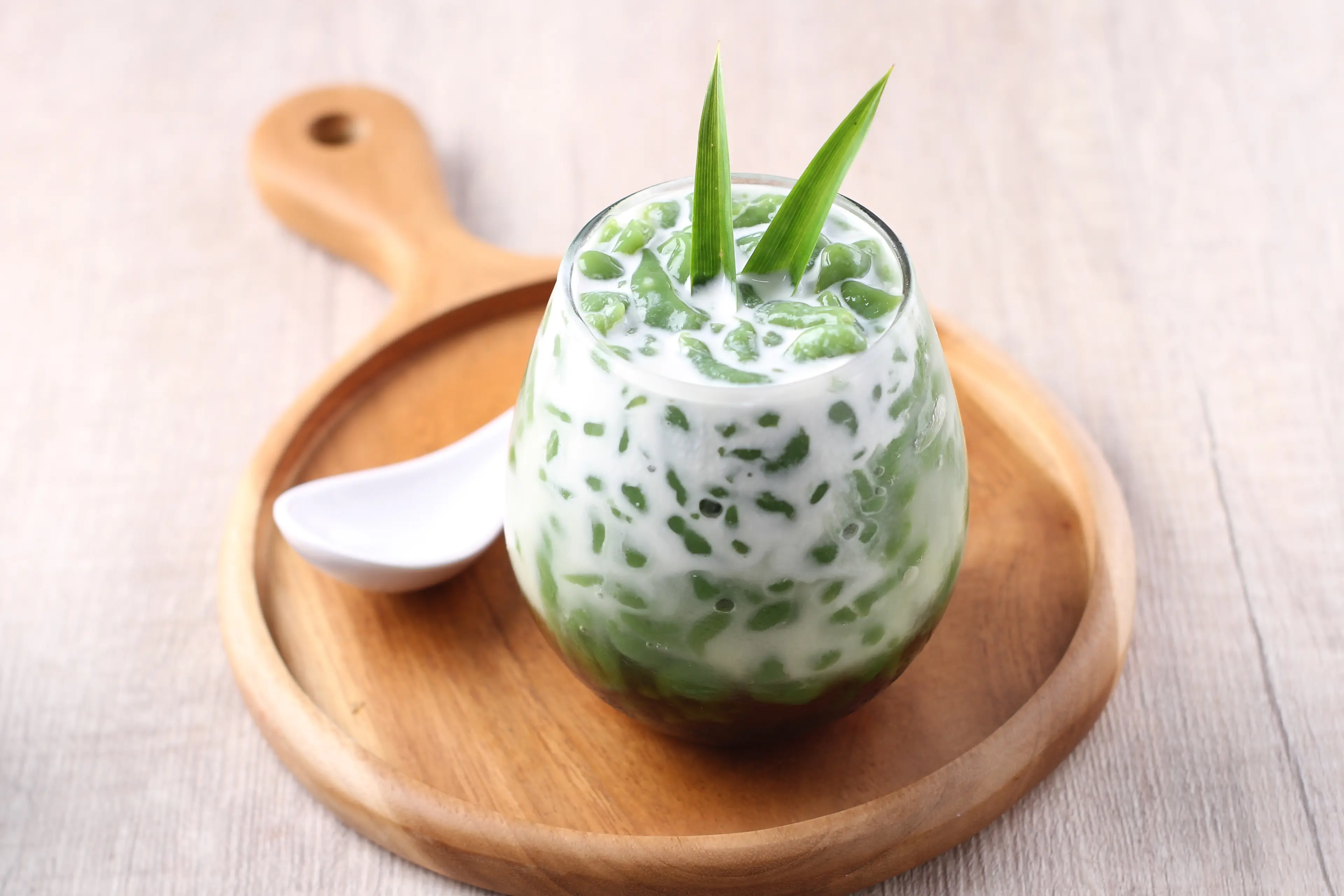
Tuk-a-loc
Tuk-a-loc is a popular Cambodian drink made from blended fruits, sweetened condensed milk, and crushed ice. It's a refreshing, sweet drink to enjoy while exploring Angkor Wat.
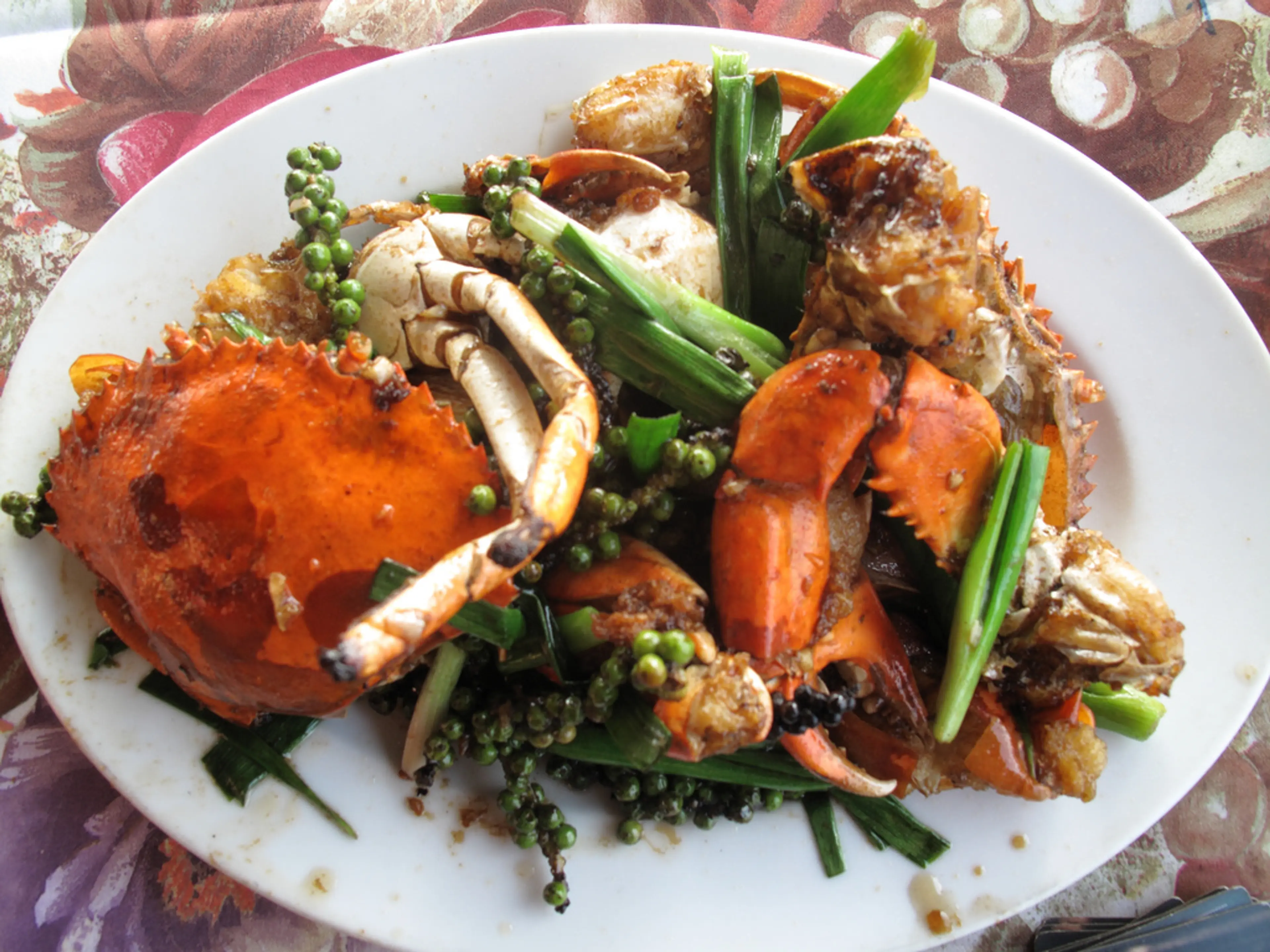
Kampot Pepper Crab
Kampot Pepper Crab is a famous Cambodian dish made with fresh crab and locally grown Kampot pepper. This dish is a must-try for seafood lovers visiting Angkor Wat.
Best time to visit
The best time to visit Angkor Wat, Cambodia is during the dry season, which runs from November to March. During this period, the weather is less humid and cooler, making it more comfortable to explore the vast temple complex. The skies are also clearer, providing excellent conditions for photography. However, it's also the peak tourist season, so expect larger crowds. If you prefer a quieter experience, consider visiting in the shoulder months of October or April.
How to get around
Bicycle
Bicycling is a popular way to get around Angkor Wat. It allows you to explore the site at your own pace and is environmentally friendly. Bicycles can be rented from numerous places in Siem Reap.
Tuk-Tuk
Tuk-tuks are a common form of transport in Cambodia. They can be hired for the day to take you around the Angkor Wat complex. The drivers often have a good knowledge of the area and can provide useful insights.
Car
Hiring a car with a driver is another option for getting around Angkor Wat. This can be a more comfortable choice, especially during the hot season. Drivers usually speak English and can provide valuable information about the temples.
Motorbike
Motorbikes are available for rent in Siem Reap. However, please note that tourists are not allowed to drive motorbikes within the Angkor Archaeological Park.
Elephant Ride
Elephant rides used to be a popular way to get around Angkor Wat, but they have been discontinued due to animal welfare concerns.
Foot
Walking is a great way to explore the temples at a leisurely pace. However, the distances between the temples can be quite large, so this method is best suited for those who enjoy long walks.
Ridesharing
Ridesharing services like Grab are available in Siem Reap. You can use these services to get to Angkor Wat and around the city. However, they are not allowed within the Angkor Archaeological Park itself.
Bus
There are no public buses that go directly to Angkor Wat, but there are shuttle buses from Siem Reap airport and from various hotels in the city. These can be a cost-effective way to reach the site.
Hot Air Balloon
For a unique perspective, consider a hot air balloon ride over Angkor Wat. This is a seasonal activity, typically available from December to March, and offers stunning views of the temples and surrounding landscape.
Important information
Currency KHR
Time zoneUTC+7
Driving sideRight
Emergency phoneAmbulance: 119; Fire: 118; Police: 117
Drinking waterOpt for bottled water
Power sockets
Voltage230 V
Things to know about Angkor Wat, Cambodia as a first time visitor
1
Angkor Wat is a UNESCO World Heritage Site, so respect the site and do not touch or climb on the ancient structures.
2
The best time to visit Angkor Wat is during the dry season, from November to March, when temperatures are more manageable (68°F-86°F or 20°C-30°C).
3
The site opens at 5:00 AM, and it's recommended to arrive early to avoid the crowds and to witness the sunrise over the temples.
4
Dress appropriately when visiting Angkor Wat. Both men and women should cover their shoulders and knees as a sign of respect.
5
You will need to purchase an admission pass to enter the Angkor Archaeological Park. Passes are available for one day, three days, or seven days.
6
It's advisable to hire a local guide to fully understand the history and significance of the site. Guides can be hired at the entrance or booked in advance.
7
Stay hydrated and wear sun protection. The Cambodian sun can be intense, especially during the dry season.
8
Be aware of potential scams. Always keep your belongings secure and avoid giving money to child beggars.
9
The site is vast and can be tiring to explore on foot. Consider renting a bicycle, hiring a tuk-tuk, or joining a tour bus.
10
There are no ATMs within the Angkor Archaeological Park, so bring enough cash for your needs throughout the day.
11
Restrooms are available at the Angkor Wat complex, but they may not be up to Western standards. Bring your own toilet paper and hand sanitizer.
12
Food and drinks are available from vendors outside the temple complex, but prices can be higher than in Siem Reap town.
13
Avoid touching or feeding the monkeys that roam around the site. They can be aggressive and carry diseases.
14
There is no Wi-Fi at the site, so download any maps or information you need beforehand.
15
If you're planning to take a lot of photos, bring extra batteries or a portable charger as there are no charging facilities at the site.
16
Be respectful during your visit. Avoid loud noises and maintain a respectful distance from monks and religious ceremonies.
17
Mosquito repellent is a must, especially during the rainy season (May to October).
18
If you're visiting during the rainy season, bring a raincoat or umbrella as sudden showers are common.
19
The site can get crowded, especially during peak season (November to February). Plan your visit during weekdays or off-peak months for a less crowded experience.
20
Lastly, remember to take your time and enjoy the experience. Angkor Wat is a place of immense historical and cultural significance, and it's worth taking the time to appreciate its beauty and grandeur.
Basic Khmer to know as a first time visitor
English phrase | Native phrase | Pronunciation | When to use it |
|---|---|---|---|
Hello | សួស្តី | suosdei | Greeting someone |
Goodbye | លាហើយ | leah hoy | Leaving someone |
Thank you | អរគុណ | orkun | Showing appreciation |
Yes | បាទ | baat | Agreeing with someone |
No | ទេ | te | Disagreeing with someone |
Please | សូម | suom | Making a request |
Sorry | សុំទោស | som tos | Apologizing |
I don't understand | ខ្ញុំមិនយល់ | knhom min yul | When you don't understand something |
Do you speak English? | អ្នកនិយាយភាសាអង់គ្លេសទេ? | neak niyeay pheasa anglis te? | When you need to communicate in English |
How much? | តម្លៃប៉ុន្មាន? | tlai ponman? | When you want to know the price of something |
Where is...? | ...នៅណា? | ... nov naa? | When you are looking for a place |
I need help | ខ្ញុំត្រូវការជំនួយ | knhom trov kar chomnuah | When you need assistance |
Bathroom | បង្គន់ | bangkon | When you need to find a restroom |
Food | អាហារ | aahaar | When you are hungry |
Water | ទឹក | tuk | When you are thirsty |
Good | ល្អ | l'ah | Complimenting something |
Bad | មិនល្អ | min l'ah | Expressing dissatisfaction |
Excuse me | សុំទោស | som tos | Getting someone's attention |
I'm lost | ខ្ញុំបាត់បង់ | knhom bat bong | When you can't find your way |
Help | ជំនួយ | chomnuah | When you need assistance |
Packing List
Clothing
Lightweight clothing
Underwear
Socks
Swimwear
Comfortable walking shoes
Flip flops
Hat
Sunglasses
Rain jacket
Toiletries
Travel-sized shampoo and conditioner
Travel-sized body wash
Toothbrush and toothpaste
Deodorant
Razor and shaving cream
Sunscreen
Insect repellent
First aid kit
Prescription medications
Hand sanitizer
Travel documents and essentials
Passport
Visa
Driver's license
Health insurance card
Travel insurance documents
Hotel and tour confirmations
Emergency contacts and addresses
Local currency
Credit and debit cards
Electronics and gadgets
Smartphone
Charger
Power bank
Camera
Memory cards
Headphones
Travel adapter
Miscellaneous items
Travel guidebook
Map of Angkor Wat
Reusable water bottle
Snacks
Travel pillow
Earplugs
Eye mask
Tissues
Wet wipes
Plastic bags for dirty clothes
Notebook and pen
Weather Conditions
When planning a trip to Angkor Wat, Cambodia, it's crucial to consider the weather as it can significantly impact your experience. Cambodia generally experiences a tropical climate, with two distinct seasons - the rainy season and the dry season. The dry season, from November to April, is the most popular time to visit. During this period, the weather is hot but not excessively so, with temperatures typically ranging from 77°F to 95°F (25°C to 35°C). This is the best time for sightseeing as the skies are clear and the chance of rainfall is minimal. However, it's also the busiest time of the year, so expect larger crowds. The rainy season, from May to October, is characterized by high humidity and frequent rain showers. Temperatures during this period usually range from 79°F to 86°F (26°C to 30°C). While the rain might deter some visitors, it also brings lush greenery and fewer tourists, offering a different, more tranquil experience. The rain usually falls in the afternoon, so you can still enjoy your morning explorations. Regardless of when you visit, it's advisable to start your day early to avoid the midday heat. Also, remember to stay hydrated and protect yourself from the sun with hats, sunglasses, and sunscreen. If you're visiting during the rainy season, don't forget to pack a raincoat or umbrella. Lastly, keep an eye on the local weather forecast during your stay to plan your activities accordingly. Enjoy your trip to the magnificent Angkor Wat!
| Month | Hi / Lo (°C) | Weather Overview |
|---|---|---|
January | 31° / 21° | January is a popular month for tourists due to the cooler temperatures and low rainfall. It's a great time to explore the temples without the crowds of peak season. |
February | 32° / 22° | February sees a slight increase in temperature but remains relatively cool. It's a good time to visit as the weather is still comfortable and the tourist crowds are not at their peak. |
March | 34° / 24° | March marks the beginning of the hot season in Cambodia. The heat can be intense, so it's important to stay hydrated and take breaks in the shade. |
April | 35° / 25° | April is the hottest month in Cambodia, with temperatures often reaching 35 degrees. Despite the heat, it's a good time to visit if you want to avoid the tourist crowds. |
May | 35° / 25° | May sees the start of the rainy season, but the showers are usually short and can be a welcome relief from the heat. The rain also brings out the lush greenery of the temples. |
June | 34° / 24° | June is in the middle of the rainy season, but don't let that put you off. The rain is usually in short bursts and the temples are less crowded. |
July | 34° / 24° | July is a good time to visit if you don't mind a bit of rain. The showers are usually short and the temperatures are more comfortable than in the hot season. |
August | 34° / 24° | August is similar to July, with short bursts of rain and comfortable temperatures. It's a good time to visit if you want to avoid the tourist crowds. |
September | 34° / 24° | September is the wettest month in Cambodia, but the rain is usually in short bursts. The temples are less crowded and the rain brings out the lush greenery of the temples. |
October | 34° / 24° | October sees the end of the rainy season and the beginning of the cooler season. It's a good time to visit as the weather is comfortable and the tourist crowds are not at their peak. |
November | 32° / 22° | November is a popular month for tourists due to the cooler temperatures and low rainfall. It's a great time to explore the temples without the crowds of peak season. |
December | 31° / 21° | December is the coolest month in Cambodia, making it a popular time for tourists. The weather is comfortable and the temples are less crowded. |
Did you know?
Places near by Angkor Wat, Cambodia
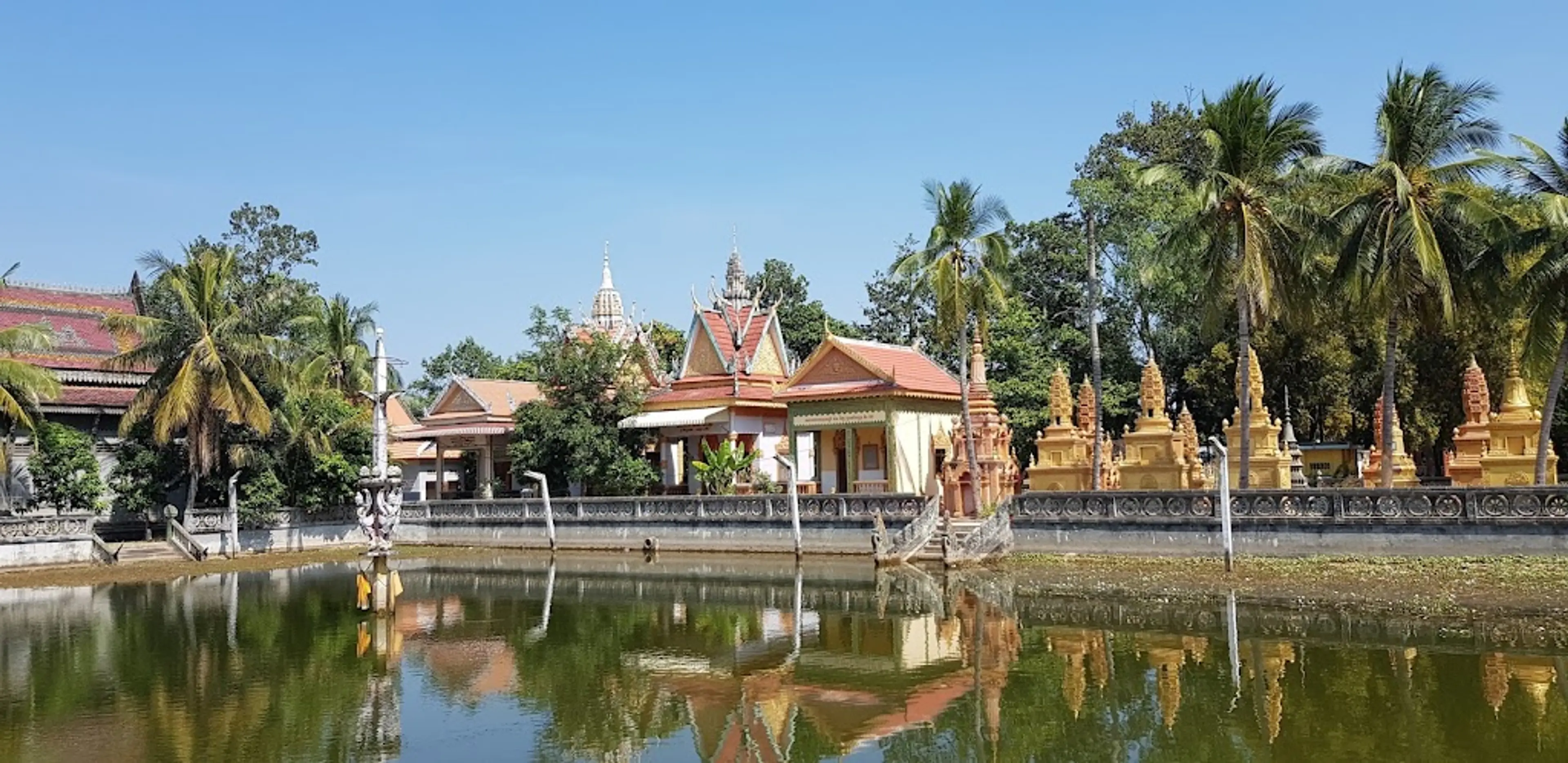
Tonle Sap Lake
The largest freshwater lake in Southeast Asia, known for its floating villages and rich biodiversity.

Phnom Kulen National Park
A national park featuring waterfalls, ancient temples, and a large reclining Buddha statue.
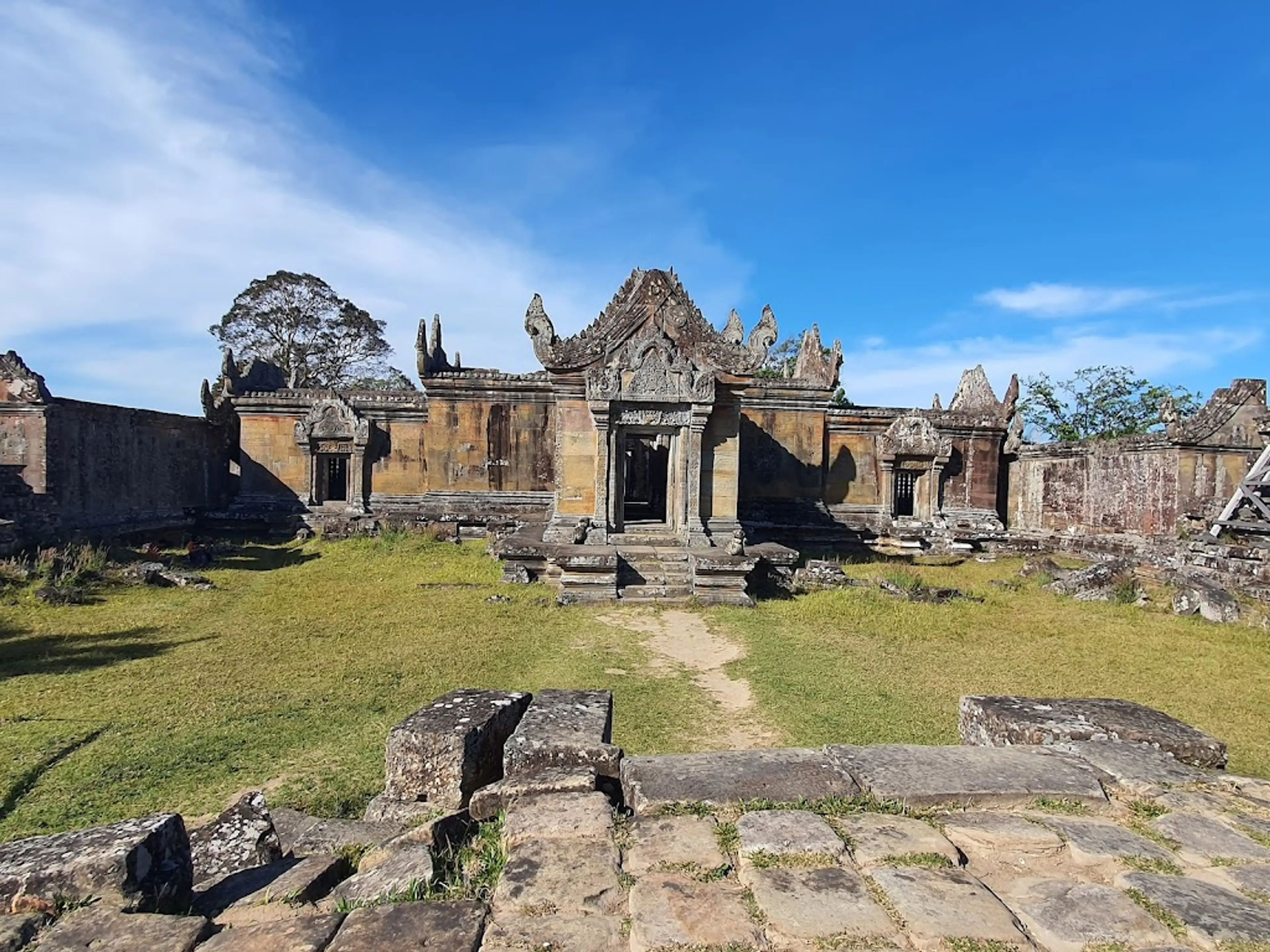
Preah Vihear Temple
A stunning Khmer temple situated atop a 525-meter cliff in the Dângrêk Mountains.

Beng Mealea
A temple in the Angkor Wat style located 40 km east of the main group of temples at Angkor.
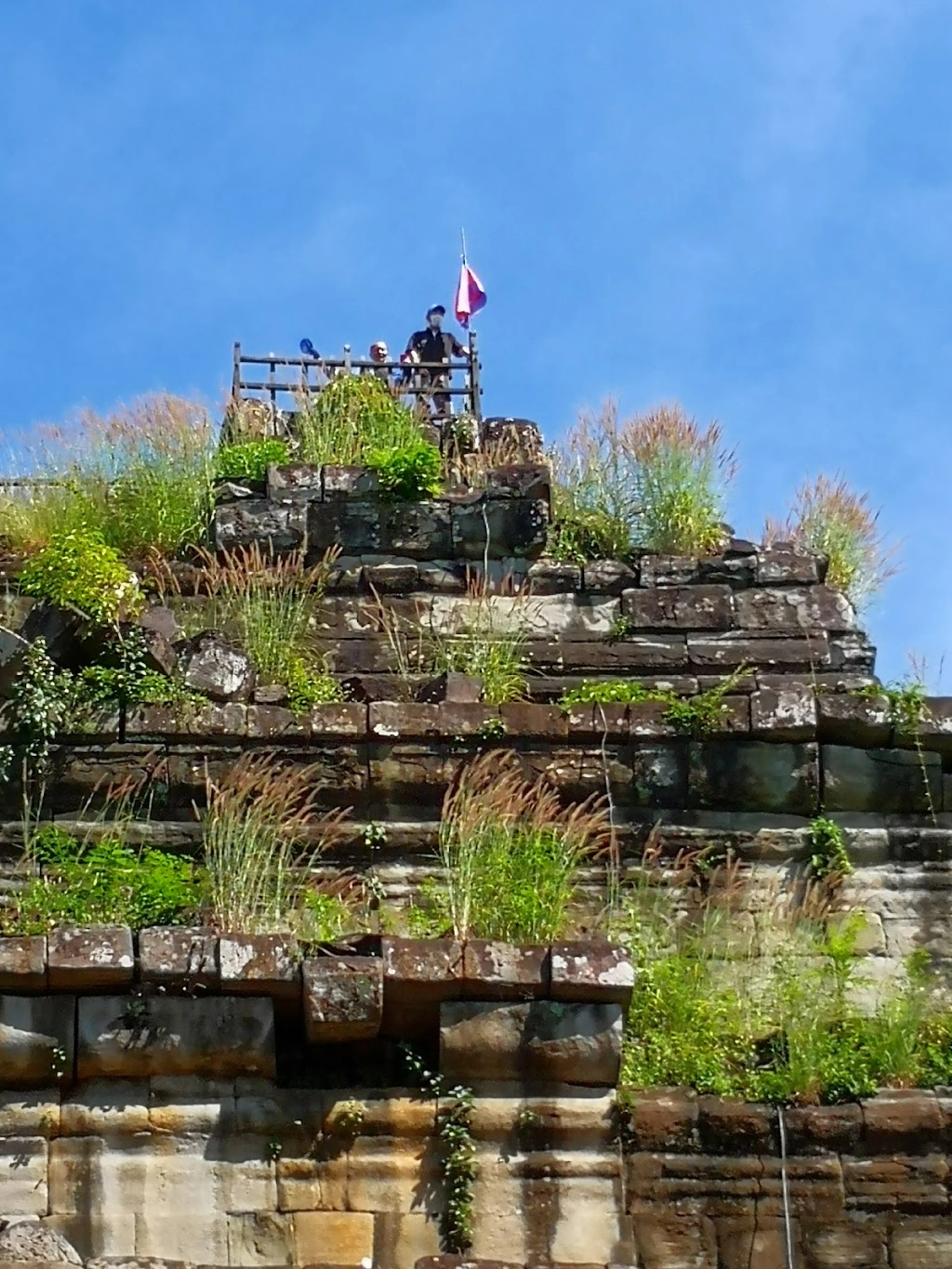
Koh Ker
A remote archaeological site in northern Cambodia about 120 kilometres away from Siem Reap and the ancient site of Angkor.
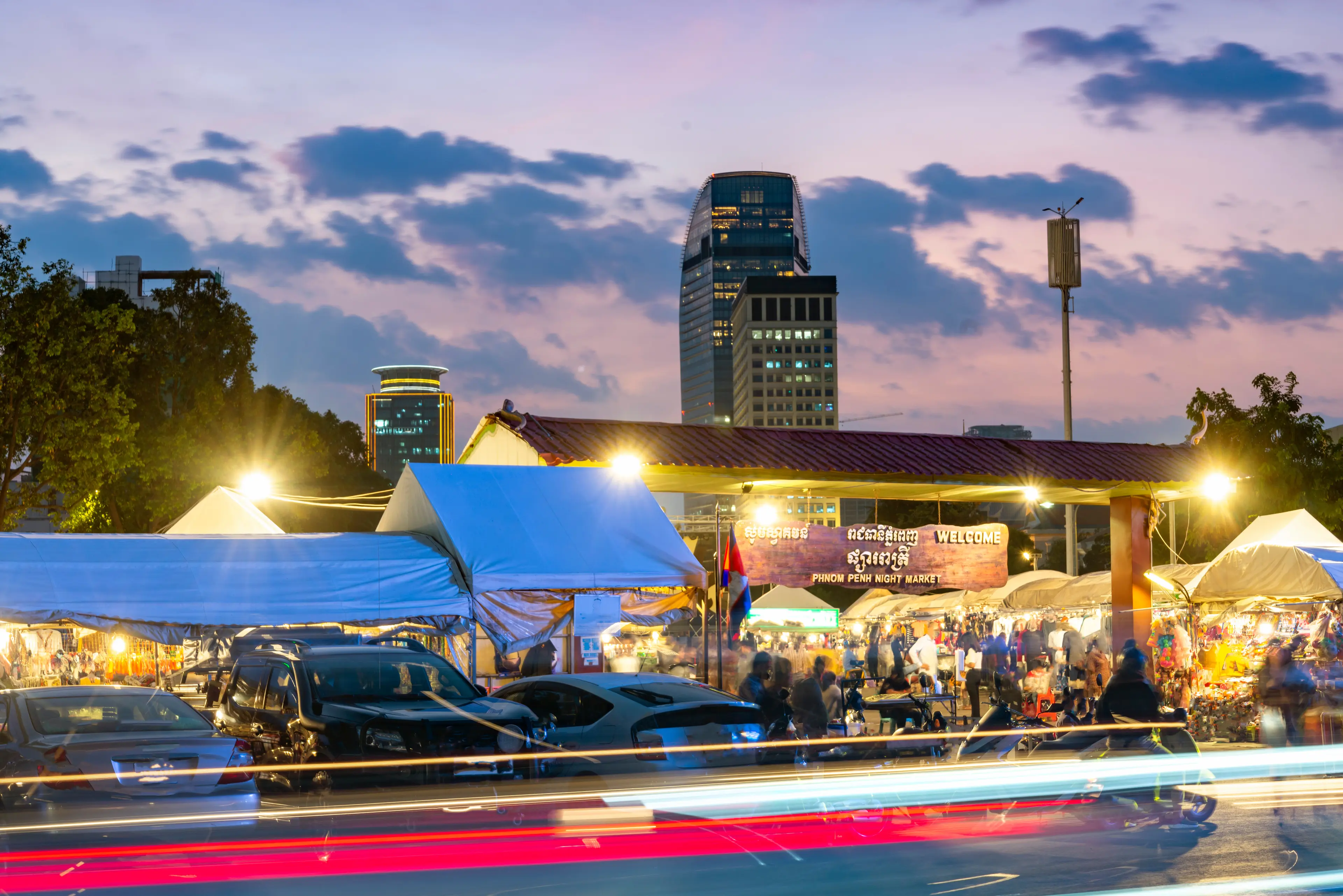
Phnom Penh
The capital of Cambodia, known for its beautiful architecture, historical sites, and vibrant nightlife.
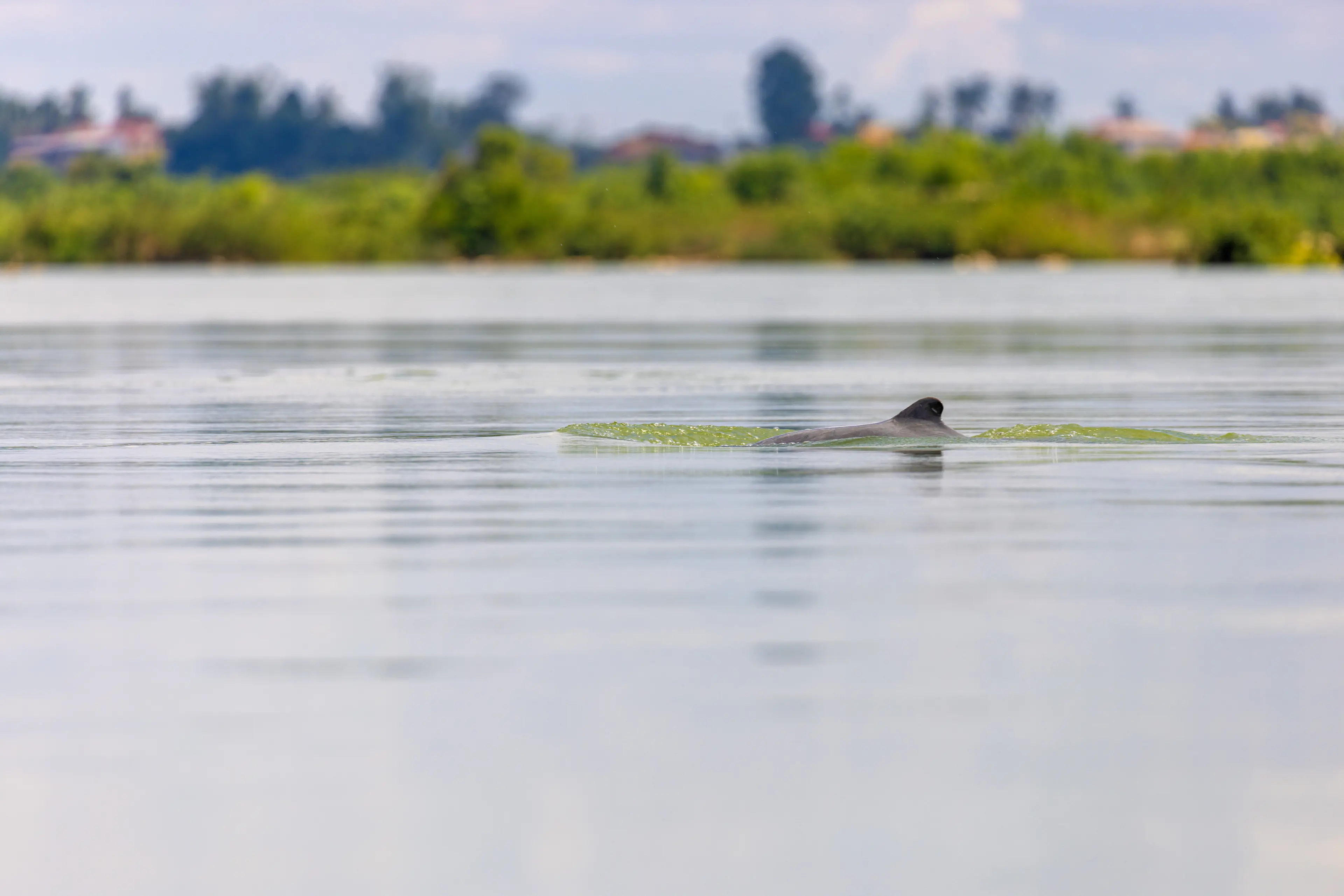
Kratie
A small town on the banks of the Mekong River, known for its colonial-era architecture and Irrawaddy dolphins.
